
Thorough surveys, clearly reported
- Sample Survey Reports
Click on the links below to view Fieldhouse Yacht Surveys' sample survey reports. Our marine surveys and the resulting report are tailored to the needs and concerns of the client. The depth and breadth of each survey report may vary and depends on various factors such as the age of the vessel, her size, number & complexity of systems on board and the level of sailing experience or technical knowledge of the client. Note that the name of the vessel, the name & details of the client and the vessel's registration numbers have been changed in each example report in order to maintain the confidentiality of the client and vessel. If you would like to see a sample marine survey report of an Insurance Survey or Pre-purchase Survey of a specific boat that is not listed here, contact us and we'll check as to whether this type of vessel has already been surveyed by Fieldhouse Yacht Surveys .
The resolution of the images in some reports has been reduced in order to create an acceptable file size for this website.

Sample Survey Reports - Motor Yachts & RIBs
Saga 29 Hard Top, Pre-purchase Survey (single engine motor cruiser)
Regal Commodore 272, Pre-purchase Survey
Steel Motor Cruiser, Pre-purchase Survey
Carson_750_RIB, Pre-purchase Survey, in-water only
Sample Survey Reports - Monohull Sailing Yachts
Moody 29, Pre-purchase Survey
Moody 35, Pre-purchase Survey
Sigma 362, Insurance Survey
Southerly 100, Pre-purchase Survey
Beneteau 435E, Pre-purchase Survey
Hallberg_Rassy_42, Pre-purchase Survey
Westerly_Longbow, Insurance Survey
Ketch-rigged_Carvel_Hull, Insurance Survey
Surveys of Catamaran Sailing Yachts
Hirondelle_Mk II, Insurance Survey
Fountaine Pajot Maldives 32 Catamaran
Sample Survey Reports of Damage Surveys
Keel Damage Report for 42' GRP sailing yacht
Fairline 41, Damage Report
Sinking of steel narrow boat
The Pre-purchase and Insurance Survey reports are typically made up of six sections:
Section 1 - introduction ..
This section is less than a page long and briefly describes the purpose of the survey, who it was written for and the vessel location.
Section 2 - Summary .
The survey recommendations are brought together and summarised in this section. These recommendations are also included within sections 5 and 6, which form the bulk of the report.
Section 3 - Scope & Limitations .
This is a one-page section, outlining the scope of the report and also giving details of areas of the boat that couldn't be accessed for inspection, due to fixed panels, fuel tanks etc getting in the way.
Section 4 - Vessel Details .
A one or two page summary of the vessels identification numbers, principal dimensions and details of any documents inspected. If any Bills of Sale, Builder's certificate, VAT certificate and Registration documents are seen, they may be detailed in this section.
Section 5 - The Survey .
This section is often between 16 and 20 pages long and describes the majority of the findings of the survey. The recommendations appear within the text of this section but are also repeated in the Summary.
Section 6 - Safety Equipment .
Similar to Section 5, but dealing only with the inspection of safety equipment.

The Pre-purchase Survey of this Moody 35 included an inspection of the mast
Recent Posts
- The Correct Anode Material for your Yacht
- Tonnage Survey of Macwester 26
- Damaged Keel Structure on 42′ GRP Sailing Yacht
- Insurance Survey of Swan 36 at Emsworth Yacht Harbour
- Pre-purchase Survey of 1990 Hallberg-Rassy-Rassy 36 Mk1 in Chichester Marina
FYS Facebook Page

Florida Boat & Yacht Surveyors
[email protected], 24 hour staff available, 1-866-fla-boat, 1-866-352-2628, florida boat & yacht surveyors has closed, all surveyors have retired., contact information: [email protected].
/inspectx/images/logo-ID-b1abebee-ceea-44db-f988-dee522fe16f1.png)
The Future of Marine Survey Reports
- User Account
- Testimonials
- User Guide & Manual
- Tutorial Videos
- Install Application
- Files Downloads
- Chapman Students
Touch Interface.
Save time with touch input designed specifically for entry in the field.
Comprehensive Reports.
Desktop grade features in your hands.

Industry leading quality reports completed on the go.
Visualize Your Progress.
Colored categories and buttons simplify which items are incomplete, in progress, or completed.

Multi-Person Collaboration.
Work together with your team on the same report, at the same time.
Survey the way you already know how.
Reports YOUR way.

Fast Workflow Designed on the foundation of quickly navigating your item headings so that software never dictates your inspection process.
Findings & Recommendations Automatically separates and organizes all of your findings by priority level into a consolidated list while professionally formatting the page references and layout.
Customized Reports A customized report layout with fully adjustable drag-and-drop categories, sub-categories and headings which can be re-ordered as you want your report to appear.
and so much more.. .
Designed to Touch An interface designed entirely with the intention of touch as the primary input.
Review Mode Open 'Publish Preview'™ to review and easily edit your report before publishing to PDF.
Filter View Easily refine your on-screen headings to display the headings applicable to you without unnecessary clutter.

Quick Insert Options Frequently typed phrases or statements can be saved as Quick Insert Options. These can be created on the fly and re-ordered or edited at any time while on the go.
Reminders Attach a reminder to any heading that will be displayed in the lower portion of the page to remind you of important checks as you complete your survey.

Stand-alone full featured desktop grade software specifically designed for narrative style reports to be completed in the field.
Check List Built in check list that functions as a reminder for items onboard still to be inspected or tested.
InspectX is a software platform designed for Marine Surveyors looking to save time, improve their reports and increase their business productivity. By incorporating an intuitive method of touch navigation to enter information, users can complete a professional report while in the field during a survey.
The Future of Marine Survey Software
A unique and intuitive touch interface allows fast navigation and detailed text entry at any of your personalized Categories or Headings.
Colored buttons quickly identify which items are not yet started, in progress, or completed. At a simple glance, you'll know exactly what is left to complete and never risk missing an item again.
[email protected] - (561) 600 0098
Copyright 2024 InspectX, inc. All rights reserved.

HOME | FEATURES LIST | HOW IT WORKS | PRICING | DOWNLOAD | PRIVACY POLICY | REFUND POLICY
Import from Force5 Seamlessly import your report format from Force5 (including all your headings and custom item choices) directly into InspectX.
- File Downloads
- Yacht Surveys: Ensuring Smooth Sailing in Your Maritime Adventures
In the vast realm of maritime adventures, owning a yacht is the epitome of luxury and leisure. Whether you're a seasoned sailor or a novice boat enthusiast, ensuring the safety and seaworthiness of your vessel is paramount. This is where yacht surveys and surveyors come into play. In this comprehensive guide, we'll delve into the world of yacht surveys, their importance, costs, and everything in between.
Understanding Yacht Surveys
What is a yacht survey.
A yacht survey is a comprehensive inspection and evaluation of a boat's condition, structure, and safety. It's a crucial process whether you're buying a yacht, planning to insure it, or simply ensuring its seaworthiness for your next adventure. A professional yacht surveyor performs this assessment, providing a detailed report that can influence your buying decision.
The Role of Yacht Surveyors
Yacht surveyors are experts in maritime safety and boat assessments. They possess extensive knowledge of various boat types, materials, and systems. Their primary role is to conduct thorough examinations of vessels, identifying any existing issues or potential risks . They ensure that your boat complies with safety standards and maritime regulations.
Types of Yacht Surveys
Pre-purchase boat inspection.
Before you make the exciting leap into yacht ownership, a pre-purchase boat inspection is essential. This survey involves a meticulous examination of the boat's hull, structure, machinery, electrical systems, and more. The surveyor's findings can influence your decision and negotiation with the seller.
Sailboat Survey
Sailboat surveys focus on the unique requirements of sailing vessels. The surveyor checks the rigging, sails, keel, and other sailing-specific components. This survey is vital for those who appreciate the art of sailing.
Out of Water Boat Survey
This survey involves taking the boat out of the water for a closer inspection. It allows the surveyor to examine the hull for signs of damage, osmosis, and other issues that might not be visible in the water.
Marine Insurance Survey Requirements
Many insurance companies require a marine insurance survey to provide coverage for your yacht. This survey ensures that your vessel is safe and well-maintained, reducing the insurance company's risk.
The Cost of Yacht Surveys
How much does a boat survey cost.
The cost of a boat survey can vary significantly based on several factors. These include the size and type of the vessel, its location, and the extent of the inspection required. On average, boat surveys can cost anywhere from a few hundred to a couple of thousand dollars.
Average Cost of Boat Survey
On average, you can expect to pay between $500 and $1,500 for a standard boat survey. Keep in mind that more extensive surveys or those for larger vessels can cost more. However, this cost is a small price to pay for ensuring your safety and the seaworthiness of your investment.
Factors Influencing Survey Costs
Survey costs can fluctuate based on location, with surveys in more remote areas often costing more due to travel expenses. The complexity of the boat and the thoroughness of the survey can also impact costs.
Read our top notch articles on topics such as sailing, sailing tips and destinations in our Magazine.
The Significance of Marine Engine Surveys
What is a marine engine survey.
The heart of any boat is its engine, and a marine engine survey is dedicated to its inspection. A surveyor examines the engine's condition, performance, and any potential issues. This is crucial for keeping your yacht running smoothly.
Marine Engine Survey Report
The survey report provides you with an in-depth analysis of your engine's condition. It's an invaluable document for maintenance and repair purposes, helping you ensure the longevity of your vessel.
In the vast world of maritime adventures, where the allure of owning a yacht beckons, one thing remains paramount – the safety and seaworthiness of your vessel. Yacht surveys, conducted by expert surveyors, offer a crucial lifeline to ensure your nautical dreams become a reality without any hiccups.
We've navigated through the intricacies of yacht surveys, learning about the various types, their costs, and the significance of experienced surveyors like Jeremy Wise. These professionals act as the guardians of your maritime investment, ensuring it complies with safety standards and regulations.
Whether you're embarking on the exciting journey of purchasing a yacht, need to secure insurance coverage, or simply want to maintain your boat's impeccable condition, yacht surveys are your steadfast companions.
In the end, it's not just about the costs involved; it's about the peace of mind, the guarantee of safety, and the preservation of your maritime dreams. So, as you set sail into the vast blue expanse, may your journey be smooth, your yacht be safe, and your adventures be unforgettable.
Bon voyage!
So what are you waiting for? Take a look at our range of charter boats and head to some of our favourite
sailing destinations .
Marine Survey Reports
What is a marine survey report, why should you have a marine survey, common marine survey types, marine survey styles, how to find the right marine surveyor, frequently asked questions about marine surveys, congratulations on becoming a boat owner.

A marine surveyor’s report provides the information needed about a boat for various purposes, whether as part of the preparation to buy, sell, finance, or insure it, or contract for repairs. There are several common types of marine survey reports. Whichever type of report you request, it should communicate the information it contains clearly, to help make your marine survey easier to understand and use to serve your need for the report.

A marine survey is a detailed examination of a vessel conducted by a professional boat inspector, for such purposes as determining its value or general condition. Boat surveys typically include information on safety, hull and engine condition, etc. The inspection helps the owner of a newly purchased or repaired boat have full confidence that his/her watercraft is fit to use as designed. The report also highlights any maintenance or repair work that needs to be done.
Most boat buyers do not have the expertise to make accurate marine evaluations without professional guidance. Operating a boat that is unsafe is a serious and potentially fatal mistake sometimes made by inexperienced boat owners. A marine survey is essential for your physical safety and financial protection.
Professional boat surveyors are familiar with models and their performance records under various environmental and usage conditions. So, even seasoned boat owners can benefit significantly from obtaining an objective opinion from an industry-certified marine surveyor. The surveyor can advise on sale value, equipment longevity in your particular environment, and much more.
Additional reasons why you may need a marine survey:
- To determine the accurate sale value of your boat
- To obtain boat financing
- To ensure the safety of the vessel
- To reveal obscure problems
- To obtain boat insurance
- To determine the costs of needed upgrades or repairs
Frequently requested marine survey reports include:
- Condition and Value (C&V) surveys
Appraisal Surveys
New yacht surveys.
- Insurance C&V surveys
Damage Surveys
Condition and value surveys.
This is the most commonly performed marine survey report. This kind of boat survey is normally conducted for purposes of evaluation as part of the preliminary boat-buying process. The C&V survey involves a very thorough inspection of all parts of the watercraft, including the hull, propulsion equipment, engine survey, and all other components that factor into the overall valuation of the boat.
In cases of very large and expensive yachts, an engine survey is often done as a separate marine survey. For very large sailboats, a survey of the rigging might be performed separately.
Some important information that every marine survey should contain includes:
- A determination of the fair market value and replacement value of the boat.
- All relevant details about the boat, such as the seller’s and buyer’s names.
- Markings indicating the boat name, Hull ID number, and registration numbers.
- A description of the boat’s construction and specifications of its dimensions.
- A statement of the condition of the boat and its individual functional systems.
- Details about the equipment installed on the vessel.
- Recommendations for repairs for safety and functionality.
- Information on key improvements made.
- Details of damages to be repaired.
Insurance C&Vs
An insurance C&V includes approximately the same information as the more broadly defined valuation report but is narrower in scope, limited to particular components of concern to the insurer during the underwriting process.
An appraisal survey report is used to state the professionally estimated value of a boat. This kind of marine survey is typically required in estate probate cases, divorces, and other actions, and sometimes financing companies may require one before making boat loans.
When boats are damaged by accidents or storms, damage surveys are often required by insurance companies. The survey report describes the damage and provides an estimate of the repair costs.
In cases of very large yachts or custom-builds, a marine surveyor may examine the vessel under construction at various points during the process. If you’re buying from a well-established and highly reputable yacht builder, this report may not be necessary. Only purchase a yacht certified by the National Marine Manufacturers Association (NMMA), to ensure that it has been independently inspected and built to American Boat & Yacht Council standards, which exceed Coast Guard requirements.
Some marine survey reports are data-heavy and difficult to follow. Others are written in paragraph form. However your report may be designed, it should provide a clear enough account of the boat’s general condition and what needs to be done to make it safe and fully functional. You should ask the surveyor to explain any parts that you do not understand clearly.
You may receive a recommendation for a marine surveyor from a boat broker, lender, watercraft insurer, or other party who works with a surveyor routinely that they rely on. Or, check the industry’s most prominent organizations, which are listed below. These two associations enforce standards and requirements that marine surveyors must meet for professional accreditation:
- National Association of Marine Surveyors (NAMS): Links to many surveyors’ qualifications and marine survey experience are listed on the NAMS site.
- Society of Accredited Marine Surveyors (SAMS): More than 1,000 Marine Surveyors are listed on the SAMS site and sorted by location.
Here are some of the most commonly asked questions about marine survey reports:
How can I find a marine surveyor?
Go to the SAMS or NAMS website to see a list of accredited marine surveyors near you.
How much does a marine survey cost?
Costs vary by location, but generally speaking, you can expect to pay up to approximately $25 per linear foot for your marine survey. Although, for smaller boats, a surveyor’s minimum fee may exceed that rate.
How long does it take to complete a marine survey?
A detailed boat survey can take just two or three hours for some smaller boats and up to several days for some much larger boats and yachts.
Do marine surveys include boat repair cost estimates?
Marine surveys usually include a very generalized estimate of upgrade and/or repair costs based on average pricing.
Having a marine survey performed is likely to be required when financing or insuring a large new, or any used or damaged boat. The report clarifies sale value, loan value, repair costs, and more. Obtaining a professionally produced marine survey report can give a boat owner a much clearer picture of appropriate sale or purchase pricing, loan terms, repair costs, and other information to help a boat owner better understand his or her vessel and the true worth of the investment in it.
For a quality marine survey report, the place to start is with a recommendation from a relevant trusted source, such as the NAMS or SAMS website lists of certified professional marine surveyors.
Overall, as a boat shopper or owner, you are well advised to check other resources as well, to increase your knowledge on how to choose a boat, seller, boat builder, or lender, and other pertinent topics.
Recent Articles & Insights
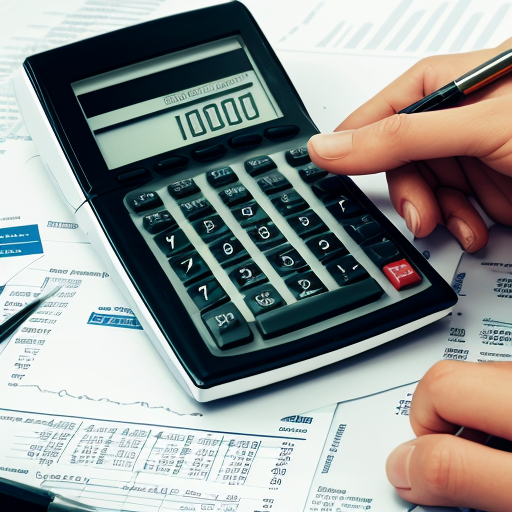
Common Misconceptions about Yacht Financing and Boat Financing There are a number of common misconceptions…

Treat Your Boat to a Tune-Up One of the biggest potential obstacles for prospective buyers…
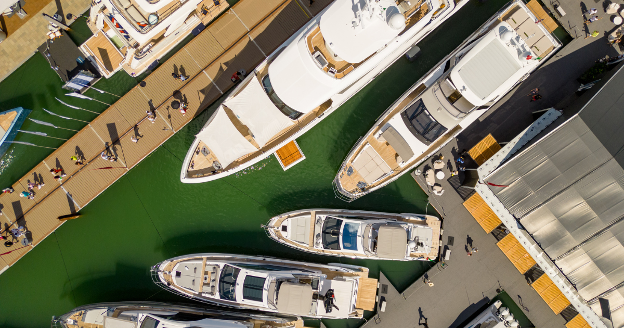
1. Boat Shows: Where Dreams Set Sail The best place to buy a boat is…
- About Boatzon
- Boatzon Press
- Boatzon Labs
- Terms of Use
- General Privacy Policy
- Financial Privacy Policy
- Community Guidelines
- Prohibited Items Guidelines
- Posting Rules
- Shipping Policies
- Responsible Disclosure Policy
- CA Supply Chain Disclosure
- Accessibility Commitment
Explore boatzon
- Boats for Sale
- Boat Engines for Sale
- Boat Trailers for Sale
- Boat Accessories for Sale
- Talk to Professional
- Join or View Discussions
boatzon Services
- Boat Loan Calculator
- Boat Loan Rates
- Boat Loan Application
- Engine Loan Quote
- Trailer Loan Quote
- Product or Service Loan Quote
- Insurance Quote
- Sea Ray Boats for Sale
- Contender Boats for Sale
- Tracker Boats for Sale
- Boston Whaler Boats for Sale
- Ranger Boats for Sale
- Grady-White Boats for Sale
- Trolling Motors for Sale
- Engine Parts for Sale
- Yamaha Engines for Sale
- Mercury Engines for Sale
- Suzuki Engines for Sale
- Continental Trailers for Sale
- EZ Loader Trailers for Sale
- Magic Tilt Trailers for Sale
copyright © 2022 Boatzon Holdings L.L.C., inc. All Rights Reserved
need help? call 1-833-262-8966
Privacy Overview

Service Locator
- Angler Endorsement
- Boat Towing Coverage
- Mechanical Breakdown
- Insurance Requirements in Mexico
- Agreed Hull Value
- Actual Cash Value
- Liability Only
- Insurance Payment Options
- Claims Information
- Towing Service Agreement
- Membership Plans
- Boat Show Tickets
- BoatUS Boats For Sale
- Membership Payment Options
- Consumer Affairs
- Boat Documentation Requirements
- Installation Instructions
- Shipping & Handling Information
- Contact Boat Lettering
- End User Agreement
- Frequently Asked Questions
- Vessel Documentation
- BoatUS Foundation
- Government Affairs
- Powercruisers
- Buying & Selling Advice
- Maintenance
- Tow Vehicles
- Make & Create
- Makeovers & Refitting
- Accessories
- Electronics
- Skills, Tips, Tools
- Spring Preparation
- Winterization
- Boaters’ Rights
- Environment & Clean Water
- Boat Safety
- Navigational Hazards
- Personal Safety
- Batteries & Onboard Power
- Motors, Engines, Propulsion
- Best Day on the Water
- Books & Movies
- Communication & Etiquette
- Contests & Sweepstakes
- Colleges & Tech Schools
- Food, Drink, Entertainment
- New To Boating
- Travel & Destinations
- Watersports
- Anchors & Anchoring
- Boat Handling
- ← Safety & Prevention
Marine Surveyors
Advertisement
Here's how to get the most useful survey for your money:
Let the surveyor know why you need a survey. If it’s to purchase a boat or to fulfill an insurance requirement, you need a Full Condition and Value (C&V) survey. This report will estimate the current market value for the boat today, the cost to rebuild the boat today, and provide a detailed description of the construction and condition of the hull and major systems (i.e. electrical, fuel, machinery, rigging, etc.).
Some surveyors offer abbreviated one or two page opinions, which they'll often refer to as an insurance inspection. This brief format may not be sufficient for insurance underwriting purposes since it omits the details necessary to accurately analyze the risk. Check with your insurance company to determine what they need.
Make sure the report indicates the boat was also inspected for compliance with the current boating safety standards set by the National Fire Protection Association (NFPA.), the American Boat and Yacht Council (ABYC), as well as U.S. Coast Guard standards.
If you are selecting a surveyor in order to obtain insurance through the BoatUS Marine Insurance Program, please note the following:
- Generally surveys completed by individuals directly associated with boat yards, marinas or brokers will not be accepted for insurance due to the potential for a conflict of interest.
- Surveys done by insurance company personnel may not be accepted if they lack the required detail.
- Older boats, or those made of wood, steel, or aluminum may need to be hauled in order to be properly surveyed.
The National Association of Marine Surveyors (NAMS) and the Society of Accredited Marine Surveyors (SAMS) are professional organizations having rigorous examination programs for their membership. The BoatUS Marine Insurance Program will accept value surveys or pre-purchase surveys from surveyors with a SAMS designation of "AMS" with a specialized classification of "Y-SC" (yacht and small craft) or NAMS designation of "CMS" with a specialized service code of "A" (yacht and small craft).
It’s appropriate to ask the surveyor you select for a copy of a resume, as well as a sample survey of the type that you are requesting.
Please note that BoatUS does not endorse or guarantee the performance of surveyors. No warranties expressed or implied are intended or created by this directory. Any questions regarding the scope of a surveyor's inspection, their cost or the content of the reports should be discussed with the surveyor.
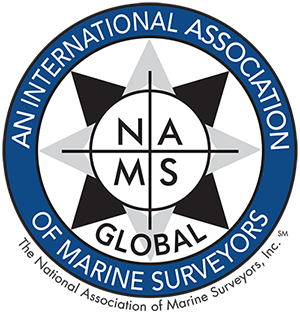
Visit the NAMS Website
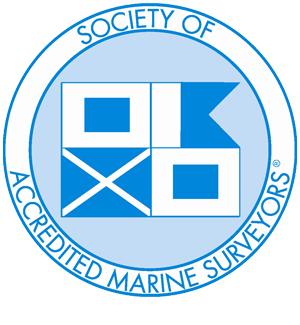
Visit the SAMS Website
Related Articles
The truth about ceramic coatings for boats.
Our editor investigates the marketing claims of consumer-grade ceramic coatings.
Fine-Tune Your Side Scan Fishfinder
Take your side-scanning fishfinder off auto mode, and you’ll be spotting your prey from afar in no time
DIY Boat Foam Decking
Closed-cell foam flooring helps make boating more comfortable. Here’s how to install it on your vessel
Click to explore related articles
BoatUS Editors
Contributor, BoatUS Magazine
Award-winning BoatUS Magazine is the official publication of Boat Owners Association of The United States. The magazine provides boating skills, DIY maintenance, safety, news and more from top experts.
BoatUS Magazine Is A Benefit Of BoatUS Membership
Membership Benefits Include:
Subscription to the print version of BoatUS Magazine
4% back on purchases from West Marine stores or online at WestMarine.com
Discounts on fuel, transient slips, repairs and more at over 1,200 businesses
Deals on cruises, charters, car rentals, hotel stays and more…
All for only $25/year!
We use cookies to enhance your visit to our website and to improve your experience. By continuing to use our website, you’re agreeing to our cookie policy.
Yacht Survey Partners | Superyacht survey specialists

Marine surveyors and consultants supporting the superyacht industry
Yacht Survey Partners are global marine surveyors and superyacht consultants providing pre purchase surveys, condition surveys and post casualty surveys for both hull machinery and P&I claims, casualty support including salvage, technical consultancy, expert witness and dispute resolution.
We specialise in yachts above 30 meters in length (both power and sail) with a particular focus on superyachts above 40 metres combining our yachting experience and knowhow with first class support to our clients including the world’s leading yacht brokers, managers, law firms, marine underwriters and insurance brokers.
We combine extensive technical knowledge and experience in the luxury yacht market with an excellent commercial understanding of brokerage, new build, refit and insurance markets, making us exceptionally well placed to provide sound objective advice in all aspects of marine surveying.
PRE PURCHASE SURVEYS
Pre purchase surveys form a significant part of our business. We work Globally, with assignments in the last 12 months in the USA, Hong Kong, South Africa, Northern Europe and all over the Mediterranean. We only survey yachts larger than 40 metres, whether motor or sailing yachts. We have extensive experience in surveying yachts larger than 70 metres. The largest yacht that we have surveyed to date is 124m. However, given the team’s experience and our highly scalable survey system, we are happy to survey much larger yachts.
We pride ourselves on our responsiveness throughout all stages of the survey process. This means that you will receive a fully costed proposal within 48 hours of your request. It means that we will do our best to accommodate even the tightest of timelines. And above all, it means rapid reporting: the buyer’s team are kept abreast of progress during the survey. A final written report is generally issued within 3 working days of our team stepping off the yacht.
We pride ourselves in embracing technology to optimise the survey process. Our cloud based survey platform not only enables us to deliver industry leading reports within time timeframes, but it also offers the buyer’s team a uniquely powerful tool to understand issues, solutions, priorities, costs and timeframes. The software can also greatly assist with post-closing transitions to new yacht managers and also with refit planning.
For our clients, we aim to offer a seamless service from first enquiry, through survey planning, execution, reporting and follow up.
For the yachts that we survey, we pride ourselves on being easy to work with: efficient, organised, polite, easygoing and experienced. All our surveyors have served at sea themselves.
If you would like to know more about our superyacht Pre Purchase Surveys, please click the link here . If you would like to read more about the Superyacht Survey process, please follow this link .
CONDITION SURVEYS
We are often retained to undertake condition surveys, either to assist Owners and Brokers in preparing a yacht for sale, or to assist Owners and yacht managers in planning a major refit, or where underwriters require an up-to-date condition survey prior to agreeing policy renewal.
Our condition surveys follow the same general approach as our pre purchase surveys, with the seamless service from first enquiry, through survey planning, execution, reporting and follow up. Our condition surveys provide the same industry leading reports within time tight timeframes, backed up by our unique web-based survey platform.
If you would like to know more about our superyacht Condition Surveys, please click the link here .
INSURANCE SURVEYS
We work for the leading marine hull & machinery underwriters, P&I clubs and insurance brokers, providing insurance claim support, mostly for yachts of over 30 metres in length. We support insurers throughout the life of a claim, from initial investigation and fact finding, damage surveys, review of repair specifications, review of repair quotations, overseeing repairs and at the completion of the repair process, review and approval of accounts.
At any one time we are engaged in supporting a wide range of ongoing claims, including fire, floods, groundings, collisions, allisions, paint damage, lightning strikes, extreme weather damage, tender damage, machinery breakdown, abnormal corrosion, latent damage and design defects. The only claims that we don’t support are crew medical and personal accident.
Our services include a 24/7 emergency response service, where we have in the past arranged tugs for salvage and recovery, towage to a safe haven or towage to a shipyard for repairs or to stand by a yacht where insurers deem that it would be prudent for a damaged yacht to be escorted to safe haven. We have also consulted on towage approval plans and assisted yacht management companies as part of their own emergency response plans.
If you would like to know more about our Insurance Surveys and Insurance Claim Support, please click the link here .
If you need to contact our 24/7 Emergency Response Service, please click the link here .
TECHNICAL CONSULTANCY
Our technical consultancy services have included providing advice to Owners during complex repairs and refits, major insurance claims, refit planning, preparations for Class surveys, capex and opex budgeting and dispute resolution.
If you would like to know more about our Technical Consultancy, please click the link here .
We specialise in providing technical support including specification and contract reviews, milestone/ progress surveys, pre delivery harbour and sea trials, warranty list management, dispute resolution and providing technical support for the Owner’s team.
If you would like to know more about our New Build Technical Support, please click the link here .
We specialise in providing technical support including refit specification and contract reviews, milestone/progress surveys, pre delivery harbour and sea trials, warranty list management, dispute resolution and providing technical support for the Owner’s team.
If you would like to know more about our Refit Technical Support, please click the link here .
SHIPYARD SERVICES
We are happy to work with shipyards as well as Owners and yacht managers. Our work includes dispute resolution, JH143, technical audits and technical consultancy.
If you would like to know more about our Shipyard Services please click the link here .
LEGAL SUPPORT
We work with a number of leading marine law firms, providing technical support on complex cases, assistance with dispute resolution, review of technical specifications within new build and refit contracts, insurance claim support, expert witness and of course sale and purchase.
If you would like to know more about our Legal Support Services please click the link here .

Yacht Survey Partners was founded by Richard Franklin, who was previously global head of Braemar Yacht Services. Having built the business to become recognised as one of the leaders in the yachting industry, Richard formed Yacht Survey Partners in 2021.
Our international team of Yacht Surveyors have all served time at sea as Superyacht Captains and Chief Engineers, and ashore as Technical Managers, Project Managers and Superintendents. They all have in depth technical yachting knowledge combined with extensive superyacht survey experience.
Yacht Survey Partners also work closely with a range of specialist marine technical service providers in areas such as electrical systems, marine engineering, AVIT, paint and naval architecture, bringing in their support as required.
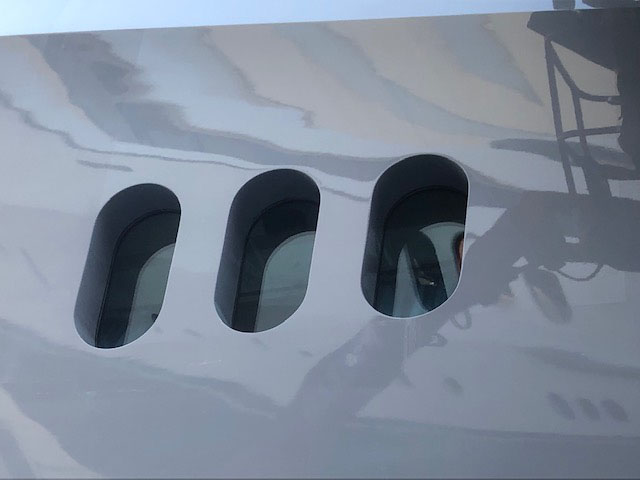
RECENT PROJECTS
Yacht Survey Partners work with many of the world’s most respected yacht builders, shipyards and superyacht owners undertaking a range of marine surveys including dry dock inspections, sea trials and acceptance trials.
We are experienced in working to tight deadlines and in many cases handover our final report within a few days of leaving the yacht.
In recent months we have completed pre purchase surveys on many yachts with an average length of 62 metres and a combined total of 28,000 gross tonnes including some of the most high profile superyachts to change hands in recent years.
Below is a selection of our most recent superyacht surveys.
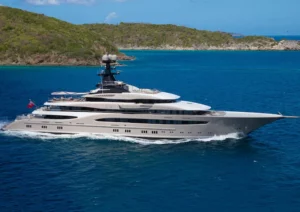
95m Lurssen Kismet survey
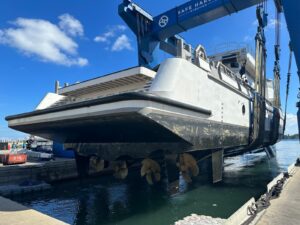
55m Damen support yacht survey
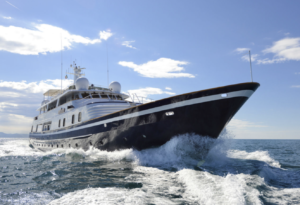
Goose (ex Atlantic Goose) pre purchase survey
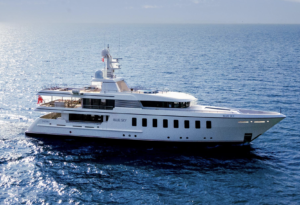
45m Feadship Blue Sky survey
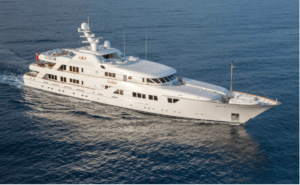
65m Feadship Callisto survey
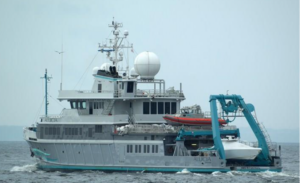
55m Research Vessel R/V ODYSSEY survey
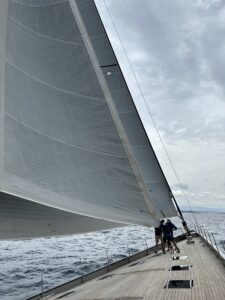
53m Sailing Yacht PINK GIN VI survey
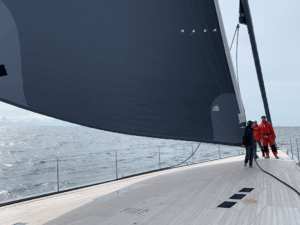
56m Vitters new build sailing yacht acceptance trials

67m Turkish Gulet survey
Yacht Survey Partners are based in London with surveyors in key yachting locations around the globe including Palma de Mallorca, Barcelona, Tarragona, La Ciotat, Marseille, Antibes, Monaco, Genoa, Livorno and Fort Lauderdale.
Whether you need a superyacht survey, technical advice or claims support, a member of our team is on hand wherever and whenever you need to provide urgent assistance and advice.
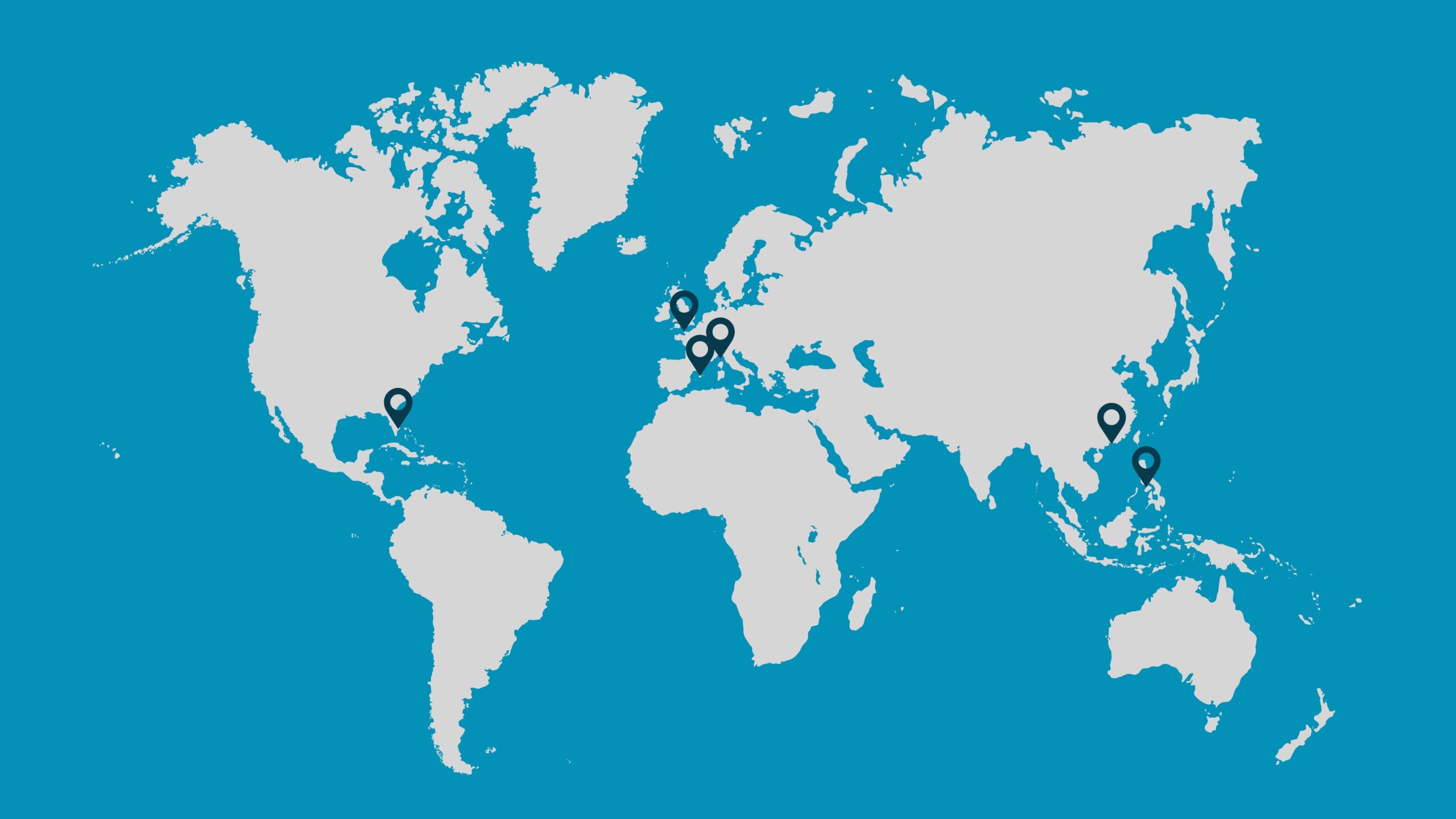
News & Articles

Is AI the future of superyacht surveys?
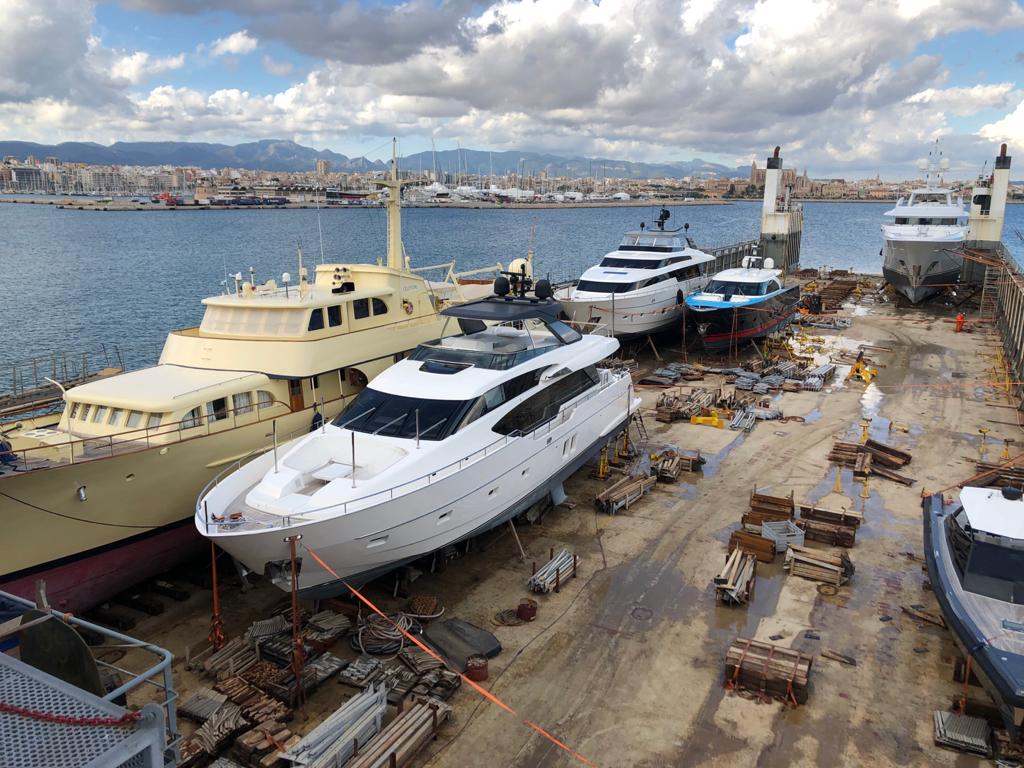
Navigating Superyacht P&I Insurance Claims
Superyacht investor article featuring yacht survey partners.
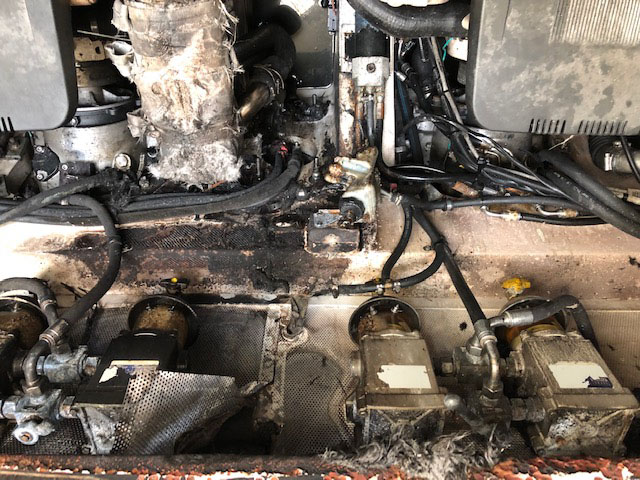
Navigating Superyacht Hull & Machinery Insurance Claims
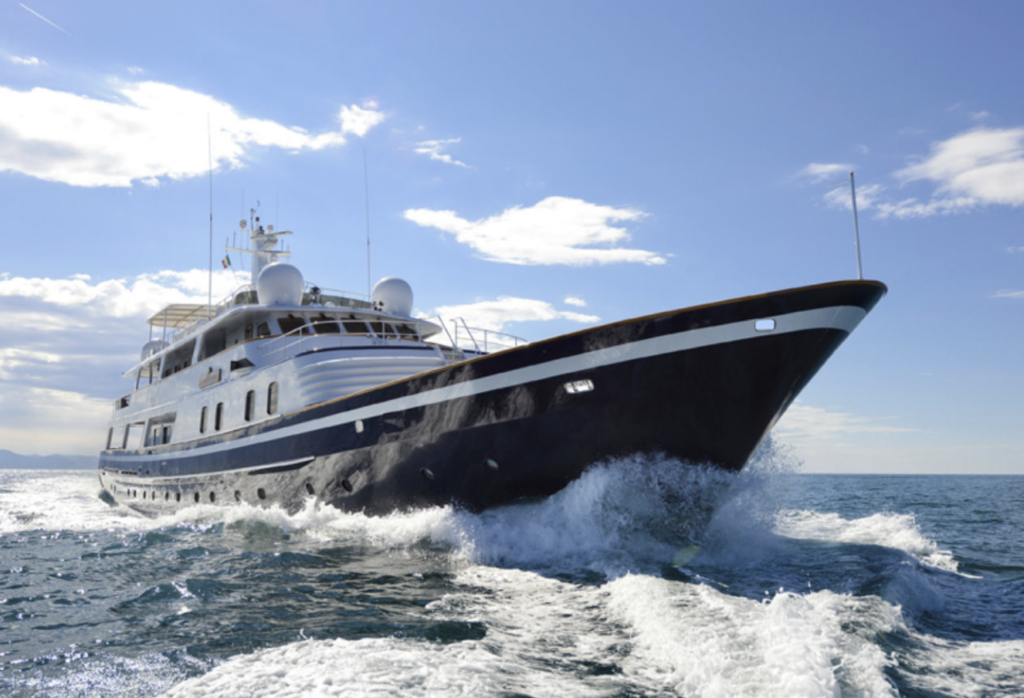
Unlocking the secrets of a successful sea trial
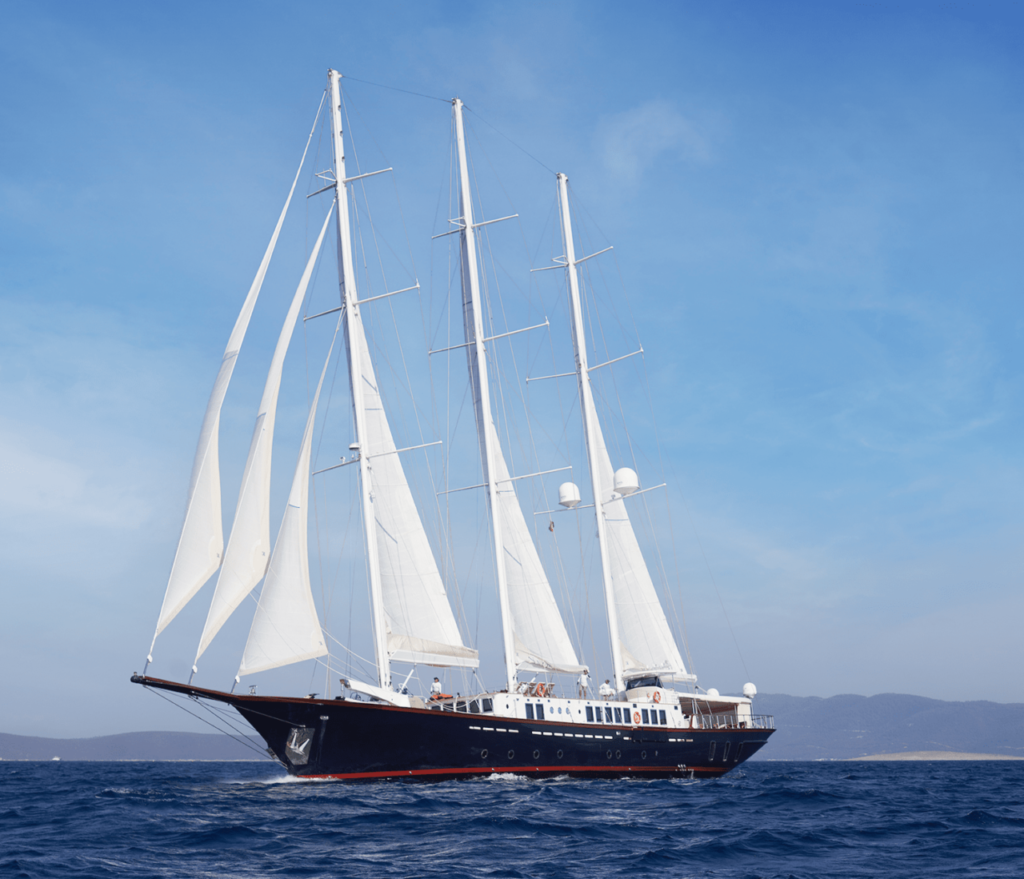
Using specialists as part of a superyacht survey
Contact our head office.
+44 7745 03 79 92 +34 664 502 664
Email Yacht Survey Partners
By appointment
Contact our satellite offices
Yacht Survey Partners Southampton
Yacht Survey Partners Antibes
Yacht Survey Partners Fort Lauderdale
Yacht Survey Partners Hong Kong
Yacht Survey Partners Palma Mallorca
Force 5 Marine Survey Report Software
Sample survey reports.
In the age of e-mail we now have customers who choose to use the full report for everything. However, we also have a large percentage of customers who use the condensed report for everything. It's totally your choice, the printed form does not alter the survey content at all. Merely mix-and-match these formats at will.
Many thanks to: Captain Douglass Birely Birely Marine Services Inc. 1063 S.W. Blue Water Way Stuart, FL 34997 (772) 781-9068 - Cell (954) 646-7219 For providing sample surveys.
Boat Appraisal Surveys
Get your boats true value.
- Ideal for those looking to buy or sell
- Assists with dispute resolution
- Neutral third-party assessment
- Detailed Report
REQUEST A FREE QUOTE
- Name * First Last
- Boat Type: * Power Sail
- Boat Year: *
- Boat Make: *
- Boat Length: *
- Boat Location: *
- Type of Survey Needed: * Pre-Purchase Insurance Not Sure
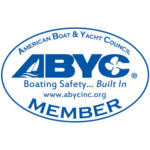
Boat Appraisal Surveys: Determine Your Boats True Value
Boat ownership can be an exciting and rewarding experience, but it is important to make sure that you are getting what you pay for. A boat appraisal performed by a professional marine surveyor is a vital part of the boat buying or selling process, providing you with an accurate and unbiased assessment of the boat’s value. Let Ocean Marine Surveyors help you gain a better understanding of the role of a marine surveyor in boat appraisals and what you can expect from the process.
What is a Boat Appraisal?
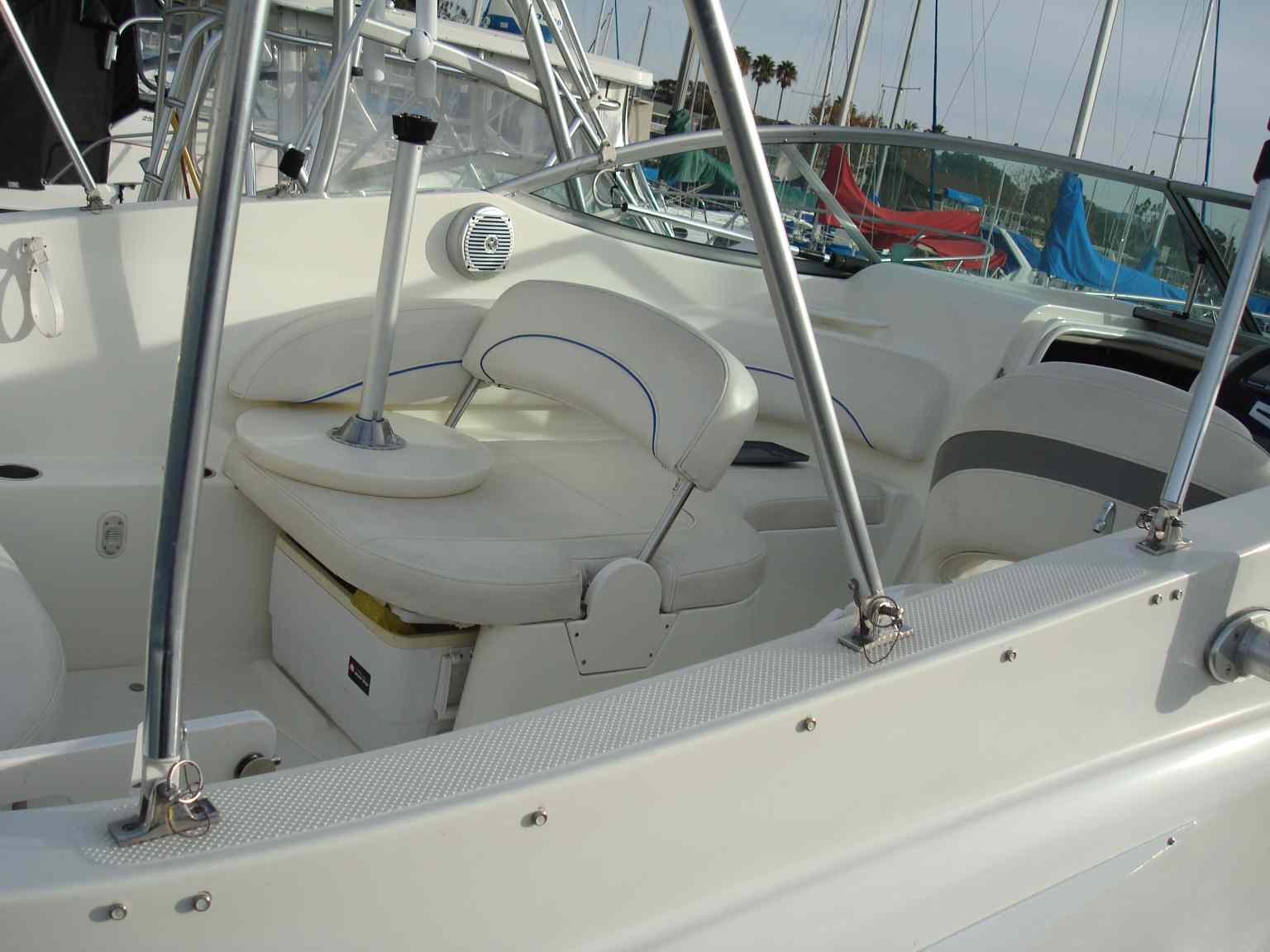
A boat appraisal is a comprehensive evaluation of a boat’s value based on various factors such as its age, condition, equipment, and market demand. Boat appraisals are performed by professional marine surveyors who have the expertise and experience to assess boats and provide an accurate estimate of their value. Boat appraisals are important for a variety of reasons, including:
- Determining the value of a boat for insurance purposes
- Establishing a fair price for the sale or purchase of a boat
- Assisting with the resolution of disputes over the value of a boat
- Establishing a value for inheritance or estate purposes
What Does a Marine Surveyor Do in a Boat Appraisal?
A marine surveyor is a professional who specializes in assessing boats and other marine vessels. They are experts in all aspects of boat construction, maintenance, and operation, and they have the knowledge and skills to conduct a thorough and accurate evaluation of a boat.
During a boat appraisal, a marine surveyor will perform a comprehensive inspection of the boat, including its hull, deck, engines, and other systems. The surveyor will also assess the condition of the boat’s equipment, including its electronics, navigation systems, and safety gear. Additionally, the surveyor will take into consideration the boat’s age, make and model, and market demand.
Based on their findings, the marine surveyor will provide a detailed report on the boat’s value, including an estimate of its fair market value and a recommended selling price. The report will also include any recommendations for repairs or upgrades that may be necessary to maintain or improve the boat’s value.
What to Expect from a Boat Appraisal
The boat appraisal process typically involves the following steps:
- Initial Consultation: Before the appraisal, the marine surveyor will typically meet with the boat owner or interested party to discuss the purpose of the appraisal and to gather information about the boat.
- Inspection: The marine surveyor will conduct a comprehensive inspection of the boat, including its hull, deck, engines, and other systems. The surveyor will also assess the condition of the boat’s equipment, including its electronics, navigation systems, and safety gear.
- Report Preparation: Based on the results of the inspection, the marine surveyor will prepare a detailed report on the boat’s value, including an estimate of its fair market value and a recommended selling price. The report will also include any recommendations for repairs or upgrades.
- Review and Discussion: The marine surveyor will meet with the boat owner or interested party to review the report and discuss the results of the appraisal.
- Final Report: The marine surveyor will provide a final copy of the appraisal report, including any revisions made during the review and discussion phase.
What Factors are Considered in a Boat Appraisal?
A boat appraisal takes into account a variety of factors that impact the boat’s value, including:
- Age: The age of a boat is an important factor in its value, as older boats typically have a lower value compared to newer boats.
- Condition: The condition of the boat is a critical factor in its value, as well-maintained boats are generally more valuable than those that have not been well cared for. A marine surveyor will assess the condition of the boat’s hull, deck, engines, and other systems, as well as its equipment, to determine its overall condition.
- Equipment: The equipment on a boat, such as its electronics, navigation systems, and safety gear, can also impact its value. A marine surveyor will assess the quality and condition of the boat’s equipment to determine its impact on the boat’s value.
- Market Demand: The market demand for a particular make and model of boat can impact its value. A marine surveyor will consider current market trends and the demand for similar boats in the area to determine the boat’s value.
- Location: The location of the boat can also impact its value, as boats located in areas with high demand and limited supply are generally more valuable than those located in areas with low demand.
- Usage: The usage of the boat, such as whether it is used for recreational or commercial purposes, can also impact its value. A marine surveyor will take into consideration the boat’s intended usage to determine its value.
How is a Boat Appraisal Different from Other Surveys?
A boat appraisal is designed primarily to assess the value of the boat and is typically a less exhaustive survey compared to a Condition & Value Survey or Pre-Purchase Survey. These surveys typically include a detailed inspection of the condition and operation of the boat in and out of water.
Why is a Boat Appraisal Important?
A boat appraisal is an important step in the boat buying or selling process, as it provides an accurate and unbiased assessment of the boat’s value. A boat appraisal can help you:
- Determine the value of a boat for insurance purposes, ensuring that you have adequate coverage in the event of an accident or loss.
- Establish a fair price for the sale or purchase of a boat, ensuring that both parties are satisfied with the transaction.
- Assist with the resolution of disputes over the value of a boat, providing a neutral third-party assessment of the boat’s value.
- Establish a value for inheritance or estate purposes, providing a clear understanding of the boat’s value for estate planning purposes.
Choosing a Marine Surveyor for Your Boat Appraisal
When choosing a marine surveyor for your boat appraisal, it is important to consider their qualifications and experience. Look for a surveyor who is a member of a reputable professional organization, such as the National Association of Marine Surveyors (NAMS), and who has experience conducting boat appraisals.
You should also ask for references and check their credentials, as well as their insurance coverage, to ensure that you are working with a qualified and reliable professional. It is also a good idea to ask for a written estimate of the cost of the appraisal and to discuss any additional services that may be offered, such as marine surveying or consultation.
In conclusion, a boat appraisal performed by a professional marine surveyor is an important step in the boat buying or selling process, providing you with an accurate and unbiased assessment of the boat’s value. By considering the factors that impact the boat’s value and choosing a qualified and experienced marine surveyor, you can ensure that you are making a well-informed decision about the boat you are buying or selling.
Why Choose Ocean Marine Surveyors
With nearly a quarter century of experience, industry certifications, and thousands of satisfied clients, Ocean Marine Surveyors is a recognized leader in the marine survey industry. Fair prices and and a strong focus on customer service, we work hard to ensure your marine survey is both an informative and pleasant experience.
- NAMS Associate
- ABYC certified in marine systems
- Recognized by AIMU (American Institute of Marine Underwriters)
- USPAP accredited compliant appraiser
- Approved through Homeland Security's TWIC
- 22 Years of boating and marine experience
- We include a Marine Survey Report Findings and Recommendations Report
- Emails and phone calls are promptly responded to
- 24hr Report turnaround time
- Competitive pricing across all our service offerings
Our Satisfied Clients:
Ocean marine surveyors, inc.
201 East Coast Highway, Newport Beach
5.0 196 reviews
Comprehensive Marine Surveys Delivered Fast
You can expect your survey in as little as 2-4 days after inspection. Ocean Marine Surveyors have one of the fastest turnaround times in the industry!
Pre-Purchase Surveys
Determining the value and overall condition of a vessel prior to purchase requires a comprehensive survey, haul out, and sea trial. This is our most in-depth survey designed to help boat buyers make an informed decision.
- Damage Surveys
No matter how many safety procedures are followed, vessel and cargo damage is inevitable. Our damage surveys are designed to give you an accurate determination of the damage incurred making it easier to file any claims.
- Insurance Surveys
Otherwise known as Condition and Valuation surveys. , our insurance surveys are specifically tailored to meet the strict requirements of marine insurance companies. Whether you are looking to get a new policy or simply renewing an existing policy, our comprehensive insurance surveys can help.

Appraisal Surveys
Your boat’s overall condition and its fair market value requires an appraisal survey. This service is generally reserved for those involved in estate settlements, legal cases, boat financing deals, divorce settlements, donations and more.
Sea trials are essential for those looking for an in-depth performance assessment. We will take your boat into open water and perform maneuvers to determine its real operational status.
Our Guarantee
We guarantee our marine surveys to be accepted by your bank and insurance underwriter. If our survey is rejected due to the quality or limitations of the report, simply have the underwriter (not the agent or broker) forward us a letter on company letterhead stating the reason for the rejection, and the survey fee will be promptly refunded.
Fast Turnaround Time
We understand tight schedules. Our report turnaround time is one of the fastest in the industry.
Qualified Experts
We are experts in our field, a current IIMS Affiliate, and ABYC Certified in Marine Systems

Detailed Reports
Survey reports are guaranteed to be accepted by every known lender and insurance carrier
- Email This field is for validation purposes and should be left unchanged.
Ocean Marine Surveyors provides a wide array of marine surveys including pre-purchase surveys, valuation surveys, damage surveys, insurance surveys, and more. George Malhiot is a current NAMS associate and IIMS affiliate. Our years of experience and credentials help ensure that each and every client receives a superior level of service.
Quick Links
Our services.
- Pre Purchase Surveys
- Appraisal Surveys
- Cargo Surveys
Newport Beach (Headquarters) 201 E. Coast Hwy, Newport Beach, CA 92660 (949) 698-3353
North Palm Beach 860 US-1 #101 B, North Palm Beach, FL 33408 (561) 710-7049
Featured Yachts
Worldwide Search
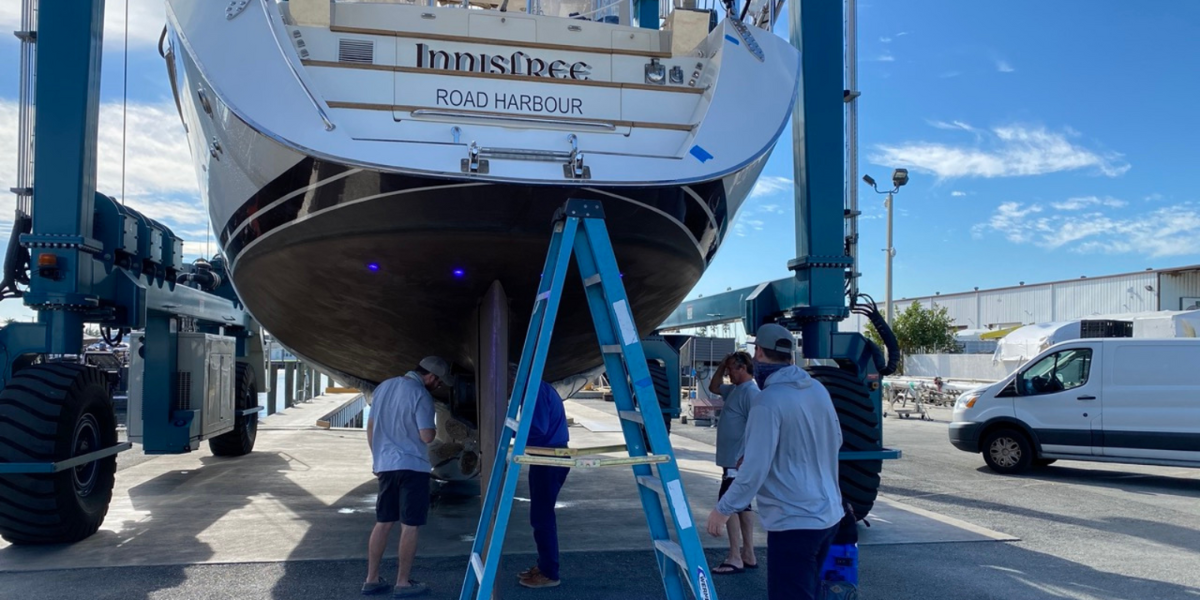
Tips from a Marine Surveyor: Avoid These Yacht-Buying Pitfalls
Career marine surveyor Tarn Kelsey wants you to know that marine surveys are a lot more than just a required step in the yacht-buying process: they're an opportunity. Purchasing a yacht is an exciting time, but prospective buyers would be wise to leverage the marine survey process to their advantage. We sat down with Tarn to talk through the marine survey process and his tips and advice for how you can get the most out of your next survey and avoid the common pitfalls he sees yacht buyers make.
Survey Says...
So what is a marine survey? Marine surveys are reports and valuations prepared by certified marine surveyors, who are like expert witnesses, acting as impartial third parties in a transaction. They are like a home inspector and an appraiser rolled into one, both inspecting and assigning a value. Tarn's specialty is pre-purchase inspections. He inspects the boat and prepares a written report for the prospective buyer, as well as for the insurance and financing companies involved. Tarn has been in the marine business since he began working in boat repair at 18. At 36, he hung up the tool belt and began apprenticing with a marine surveyor, and has been surveying boats ever since.
When does a marine survey happen?
Pre-purchase inspections happen after a prospective buyer contacts a listing broker, decides they want to buy a boat, and signs a contract to start the purchasing process. That contract starts a clock for the rest of the process, and that's when it's time to get a marine surveyor like Tarn on board to take a look at the boat.
.png?width=898&height=503&name=unnamed%20(1).png)
Survey Surveyors
Choosing a marine surveyor you trust is key. Most folks find Tarn through word-of-mouth recommendations from happy past clients, so reaching out to your networks can be a great way to get a few names to start with; brokers will usually recommend several names to preserve impartiality in picking surveyors. If you're searching online, look for names that come up again and again while cross-referencing forums, websites, and/or boat manufacturers' owner's groups. As the one who's ultimately buying the boat, you have the final say on who your marine surveyor is. It's a good idea to interview a few to find the right fit. You'll need to know if a potential surveyor:
- has enough career experience under their belt;
- is available to perform the survey and produce the report within the given timeframe;
- is familiar with the type of boat you're buying (sail vs. power, etc.); and
- tests engines, generators, and/or other specific equipment on the boat, and to what extent.
If you're going through the purchase process solo, you may want to keep in mind that some marine surveyors will only work with buyers who are working with a broker. Working with a broker can make the purchase process go much more smoothly for you overall, and the survey day for your marine surveyor: they know the ins and outs of how to prep the boat to ensure a successful day.
Macro to Micro
When Tarn arrives to survey a boat, he starts with the big things first: Are there basic structural problems? Is the rudder falling off? Is the deck rotting? Has the engine obviously caught on fire? After he's gotten an initial feel for the boat as a whole, he tackles the details, working his way through systems, and taking the boat out for a test run to check navigation systems and the sails on sailboats. Does the refrigeration work? How well? Are the hoses in good condition? How many hours are on the engine? This macro-to-micro approach allows him to systematically assess the boat's condition and begin working toward a valuation. Different used boats have different levels of wear and tear, and a marine surveyor can give you fantastic insight into the lifespans of various onboard systems and how well you can expect the boat to perform for your intended purposes.
How do surveyors assign value to a boat?
It depends on the boat! Some boats are easy because they're from a popular brand with a lot of comps on the market to compare value to. Custom boats with no sister ships can be a little trickier and you have to get creative to figure out fair comparisons. Overall, the basic question is whether the boat is above or below average for what it is and how it compares to similar boats.
Mistakes Yacht Buyers Make
As a career marine surveyor, Tarn has seen a lot of prospective yacht buyers on their prospective yachts, and he's noticed some common pitfalls excited buyers can make:
.png?width=898&height=748&name=unnamed%20(3).png)
Getting too attached before the marine survey.
It's natural to be excited when you are close to buying a new boat, but getting carried away by your emotions can cloud your judgment. Try to maintain neutrality until after you've absorbed the marine survey report. If you've already got your heart set on a yacht and then discover the engine will need to be replaced within a couple of years, it might be difficult to accurately assess whether that's a future expense you actually want to sign on for.
- Not doing enough homework on the type of boat they're buying and the systems involved.
This one is pretty self-explanatory: it's hard to know what are key features or potential problems on a boat if you're not familiar with it, and if you're overwhelmed by a marine survey report on systems you don't understand, you could miss something critical that might make you decide whether or not to buy the boat.
- Overpaying for a boat or buying too much boat for what they have the experience for.
Some folks think it's best to buy as much boat as you can afford, but if you're not an experienced boat owner, you may not realize what it costs to maintain a larger boat after the initial purchase, which could be up to 5-10% of the boat’s value per year, not including where you keep it! It's not uncommon for marine surveyors to survey one boat twice within a couple years because the first buyers were overwhelmed and disillusioned by too much boat.
- Inviting "expert" friends to weigh in.
Sure, some friends really do know what they're talking about and having an extra head aboard during the purchasing process can bring some balance to the equation, especially if you know you struggle with staying neutral. But choose who to bring into the decision-making process carefully. How experienced are they? Sometimes soliciting too many opinions can be unhelpful, especially if they're just opinions rather than expert advice.
- Not working with a broker or using a "hands off" broker who doesn't prep the boat before the survey.
As mentioned previously, some marine surveyors won't work with you if you're not working with a broker, and for good reason. Prepping a boat for a survey can be involved, and brokers know the ropes: all the systems should have been turned on, the batteries should be charged, etc. If a boat has been untouched for months (or years!) until the marine surveyor arrives, a lot of their limited time can be wasted on last-minute repairs and troubleshooting systems.
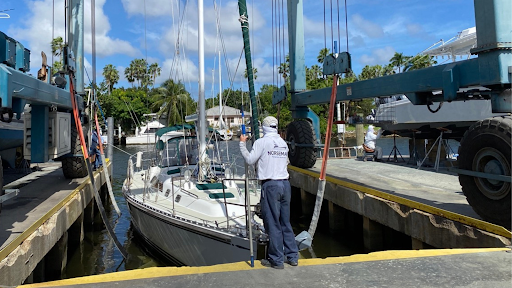
Get the Most from a Survey
So now that you know what mistakes to avoid, here's how you can go beyond and get the most out of your marine survey:
- Have an active dialogue with the marine surveyor throughout the survey.
Instead of waiting until the end to get a report you're left to decipher alone, get engaged with the surveying process. Ideally, nothing in the report should be a surprise because you had one-on-one time with the marine surveyor as they went through their process. No matter what your technical background is, you're sure to learn something helpful about the boat and its systems. Simply ask, "Do you mind if I go with you?" at the start of the survey to kick off an active dialogue that you only stand to gain from.
- Consider the time of year.
If you're surveying a boat north of the Carolinas in winter, it has likely been winterized; therefore, there are systems you either can't test or that are not cost-effective to test. Sometimes you can't help it: the boat will be gone if you wait until spring. But if you want to be sure everything can be tested and included in the survey, it's good to keep this in mind in terms of how you time your yacht-buying search.
A marine survey is so much more than an item on the yacht-purchasing process checklist. By doing your homework and staying engaged in the marine survey process, you can ensure that you have a clear picture of the boat you're hoping to buy and make a confident, informed decision about your yacht purchase. Happy boat buying!
Interested in getting a marine survey done by Tarn Kelsey? Reach out here: [email protected]. And if you're looking for a broker to aid in the entire yacht-buying process, learn why David Walters Yachts buyer's agents are some of the best in the business here [LINK TO BUYER'S AGENT BLOG] .
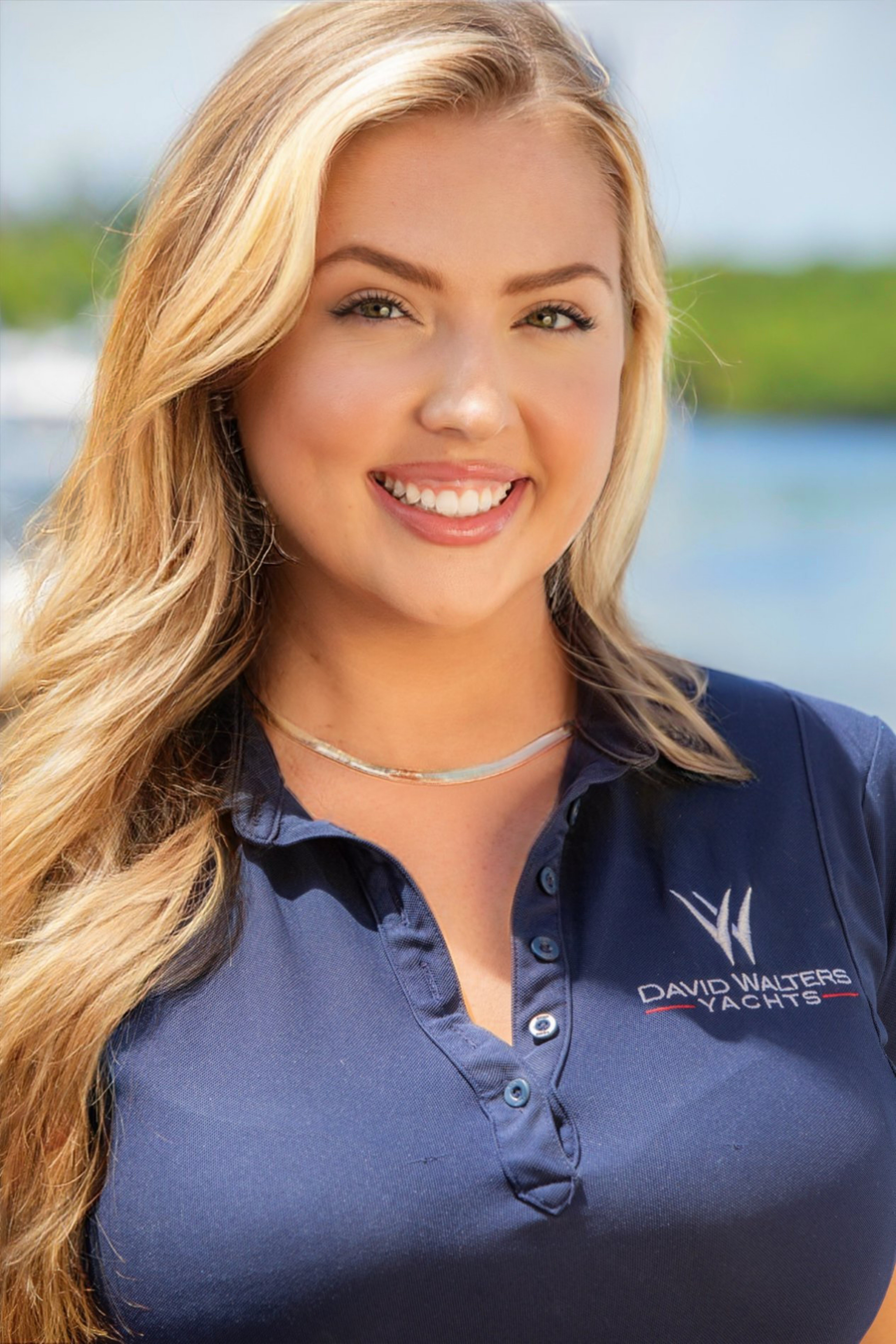
LEAVE A COMMENT
Latest posts.
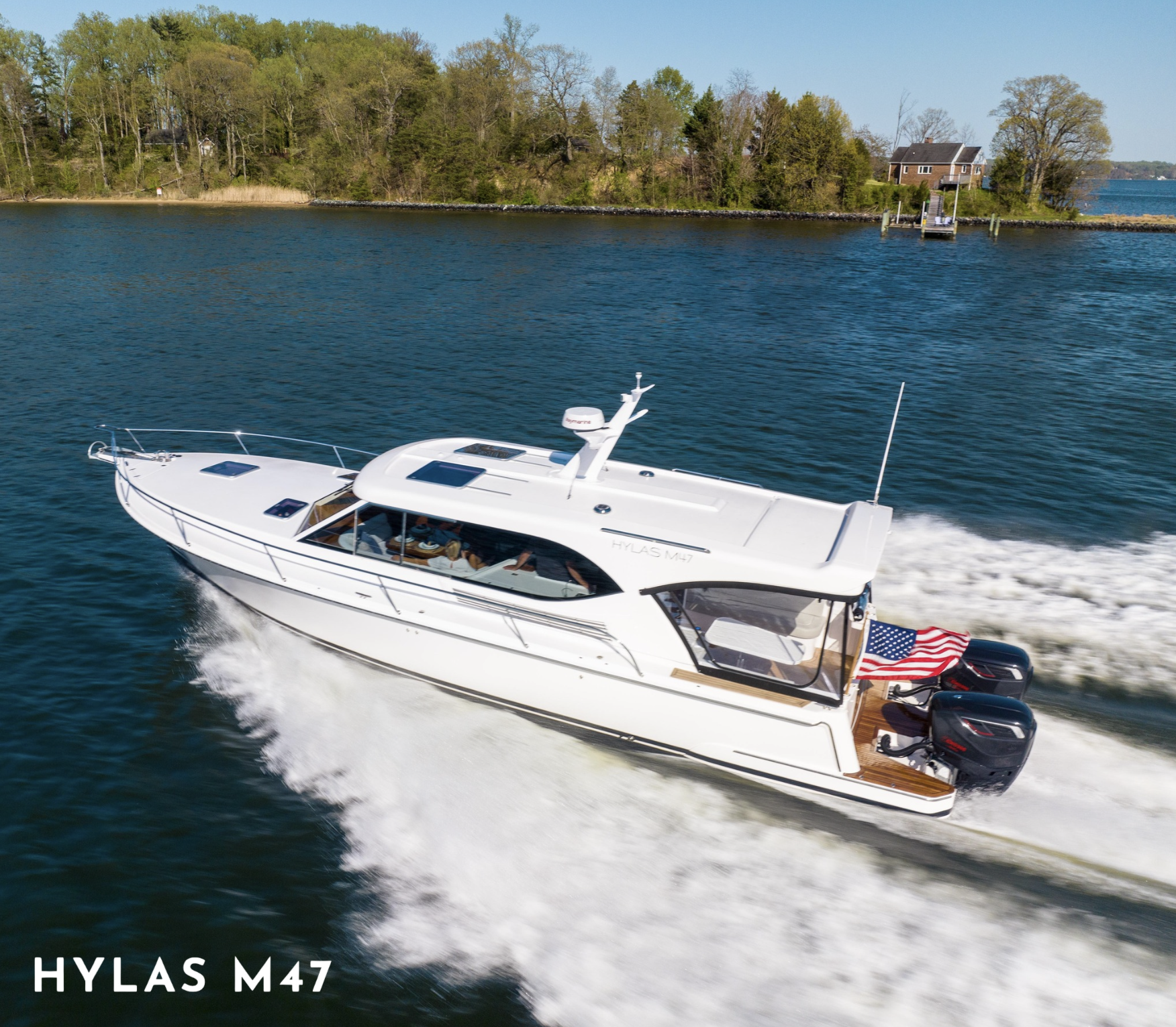
Start Your Next Adventure
Send us a message.
Purchasing a bluewater vessel can be a daunting prospect, especially if it’s your first boat. When you work with a dedicated DWY broker, you benefit from our team’s 200+ combined years of maritime experience.

- What to Expect
Survey Rates
- Free Advice
From my point of view, the price of the survey is more about value and peace of mind rather than dollars spent. What dollar amount can you put on getting all the facts about a boat you’re thinking about purchasing? How about the boat you own now?
After all, when you’re on your boat, you, your family, crew, and passengers need and want to feel safe and secure. A marine survey serves that need by putting an experienced set of eyes on the boat that is independent. Even if you’re an experienced, seasoned mariner, a marine survey is always worthwhile and normally required by lenders, insurance companies, and some marinas. I can’t tell you how many times I have found a dangerous, serious problem on a boat that the owner thought was OK.
I strive to deliver to you more than you expected. My goal is to give you more information, more help, and more follow-up – it’s all part of the over-delivering idea. It’s also my way of giving back to all of those folks that helped me over the years with my education and learning. And it’s also paying it forward too.
WHAT YOU’LL RECEIVE
All of Maritime Surveyors marine survey reports include at a minimum:
- Full and thorough documentation of the boat systems.
- Full and thorough documentation of the boats overall cosmetic and structural condition.
- Testing information.
- Findings & Recommendations.
- Photographs.
- Educational Comments and Suggestions.
- Replacement & Market Valuation.
- Quick Delivery (Normally within 24-48 Hours) of Survey Reports by email, fax, or sent USPS mail.
You need a trained professional with you on your sea trial. Here’s why – The sea trial is for finding out if you like the boat, and if it operates properly when underway. It’s nearly impossible for you to figure that out in the short time that most sea trials are conducted and you’re at the helm or in the cockpit just getting used to the boat and sea conditions.
Having a professional aboard checking engine performance, mechanical systems, sails, rigging, etc., is necessary to find out if the boat is performing properly.
Sea trials for purchase surveys are included at no charge if they are done the day of the survey. Otherwise, I charge an hourly rate (please call for more information).
With all that said, I do understand that some folks are just interested in price alone so my prices are competitive with other marine surveyors in my area.
Maritime Surveyors survey reports are accepted by all insurance companies and lenders.
CURRENT RATES (05/2022):
- Pre-Purchase Condition & Valuation (C&V) Marine Survey: $28.00 – $35.00 per foot.
- Insurance Condition & Valuation (C&V) Marine Survey: $24.00 to $28.00 per foot.
- Marine Appraisals : Donations, Estates, Court Cases, Tax Assessments: Base Price $300. plus hourly (depends on the boat – please call for more information).
- Walk-Through Inspections: Cost effective and perfect for folks out of the area that need a set of eyes and ears at the boat to determine if they want to travel to boat or even make an offer. I’ve saved lots of clients time and lots of money with this service!
- Expert Witness Fees : Half Day $600., Full Day $1,200.
- Corrosion Testing: Base Price $250 plus hourly (depends on the boat and condition).
- Consulting: By the hour, minimum 1 hour at $150. after which, billing at 1/4 hour increments – If you just need me to stop by your boat quickly or just need to talk to me via telephone or email, no charge for under a 1/2 hour.
- Boatyard Coordination: By the hour – Depends on the scope of the project.
- Ongoing Project Supervision: By the hour – Depends on the scope of the project, please call for more information.
PAYMENT OPTIONS
I accept cash, money orders, and credit card payments. Payment is due before or on the day of the survey. Click HERE to Pay Now.
Comments on this entry are closed.
{ 4 trackbacks }
- 9 Things a Marine Surveyor Wants You to Know - Atomic Tuna Yachts
- 10 Things a Marine Surveyor Wants You to Know : 2019 - Atomic Tuna Yachts
IMPORTANT INFORMATION
Most insurance companies, banks, lenders and marinas require that your survey be done by a surveyor that is a member of either SAMS®, or NAMS®.
Ross is a member of SAMS® as an AMS® so he’s approved by all insurance companies, banks, lenders and marinas.
Testimonials
- LinkedIn Profile Maritime Surveyors 3203 South Victoria Avenue Channel Islands Harbor Oxnard, California 93035 (800) 200-8839 - Toll Free (805) 984-8889 - Office (805) 701-8160 - Cellular boatross - Skype [email protected]
Pay By Credit Card
Copyright © Maritime Surveyors | Web Development by Rafael Minuesa .
WordPress Admin

- David Pascoe
- All Articles (over 180)
- Mid Size Power Boats
- Buyers' Guide to Outboard Boats
- Surveying Fiberglass Power Boats (2E)
- Marine Investigations
- Domestic (USA)
- International
- Privacy Policy
- All Articles
- Order Books

- Boat Reviews
- Buying a Boat
- Cores & Structural Issues
- Marine Engines
- Maintenance & Repairs
- Hull Blisters
- Marine Surveying
- Insurance Issues
- Boat Handling & Boat Safety
- Hurricane Preparations
- Fuel Issues

Read Online
Full Chapter One
Survey Guide to Insurance Surveys
By david pascoe, introduction.
The insurance survey, Condition and Value survey or C&V as it is often referred to, is a type of survey intended for use by insurance companies for evaluating whether or not they wish to insure a particular vessel. For over 30 years surveyors have been providing this type of survey. But, unfortunately, the insurance industry has never set a standard as to the nature and extent of information that they require, and so surveyors have largely been left to guess at the kind of information that different insurance companies want. This guide will assist the surveyor in identifying the most appropriate information to be covered in the survey and report.
Insurance surveys can also serve as an appropriate format when lending institutions request "appraisals." While there is no commonly accepted format for anyone who requests an appraisal, but the insurance survey format fills this purpose quite well.
C&V Defined:
An insurance survey is a limited form of survey that is intended to assist insurance underwriters in making underwriting decisions. The survey has two primary purposes: (1) to identify the vessel, its equipment, condition and general value, and (2) to identify defects, damages or hazardous conditions that pose a potential threat to the safety of the vessel and its passengers, or any other such condition that is likely to result in loss or damage. Insurance surveys should never be provided to a client who is purchasing a vessel for the purpose of making a purchase decision.
A report format consisting of both a pre designed form and narrative description is recommended. It is fundamental to a proper survey report that the surveyor should clearly state in a narrative format or by an appropriate form all such areas which were inspected and which were not inspected. While underwriters don't particularly like forms, and often complain about them, forms serve a very important function for surveyors. First, the form serves as a guideline to insure that all major areas of concern are covered. Second, the form records necessary information and serves as verification that these major areas were inspected.
Insurance surveys are not intended to certify that a vessel is built, or conforms to, any standard or standards set by any official standards organization. Standards such as the ABYC Standards for Small Craft and NFPA 302 Pleasure and Commercial Motor Craft are voluntary standards. While most reputable builders make an effort to comply, others do not. Surveyors must use their own judgment when making reference or recommendations for compliance, based on the surveyor's perception of hazard.
It should be remembered that the surveyor's report is his work product. It is the one example that illustrates to the industry the degree of his professionalism and competence It is from his reports that his work will be judged. Survey reports are often seen by many people, not only in the present, but often far into the future. It reflects his competence and constitutes one of his best forms of advertising. Therefore, the surveyor should strive to produce a report that meets the highest professional standards. This guide is intended to assist the surveyor in achieving that goal.
Insurance surveys should contain the following information:
- A statement of the purpose of the survey
- Date and location of survey plus status of vessel either afloat or hauled
- Builder, model (if any), and year of construction completion
- Vessel type, such as flying bridge sport fisherman, open fisherman, aft cockpit sloop, center cockpit ketch, etceteras.
- Identifiers should include hull number, registration number and engine serial numbers
- Specifications should include principle dimensions, machinery parameters such as model number, horsepower, turbo charged, transmissions, etc., plus fuel capacities
A general statement describing the vessel, whether its production or custom built, major alterations, additions or refits, major builder add-ons such as bait & tackle centers, towers, custom tops, exterior seating arrangements or any other major features that significantly affect the value of the vessel.
Equipment inventories should include only items of significant value or aggregations of smaller items that add up to substantial value. The creation of long lists describing everything on the vessel should be avoided. Underwriters neither want nor appreciate this. Comments on the presence of fine arts, large amounts of personal effects, the presence of unusual items such as computers, costly decoration or any other items of significant value. This is useful to insurance companies in the event of claims, and to help assess value.
CATEGORIES TO BE CONSIDERED
Construction: A general statement describing the hull construction and superstructure is generally all that is necessary for most production built vessels, unless the nature of the construction or design is unusual or unique. It is important for underwriters to know if a vessel is built of exotic, unusual or experimental designs or materials, or whether it is an unusual or experimental design. It is generally not necessary to describe in great detail the scantlings of the hull such as dimensions and spacing of frames and stringers, etc. It is sufficient to state that the hull is lightly, moderately or heavily built without going into great detail, unless there is a real need to do so.
Cockpit Designs: Sport fishing vessels and other vessels with cockpits that are particularly low to the water line should be inspected for the potential of sinking the vessel should there be a significant change in trim, heavy rain storms or other adverse conditions.
Propulsion Machinery: Particularly for motor vessels, the propulsion machinery constitutes a major part of the vessel's value and therefore deserves careful attention by the surveyor.
- Model & serial numbers
- Engine hours or approximate age
- Overhaul dates if known
- Apparent condition of exhaust risers
- Whether exhaust risers are of adequate height to prevent backsurge
- Visual condition of exhaust piping and mufflers
- Fire protection of non water cooled exhaust systems
- Condition of belts, hoses and engine wiring
- Inspect connections of throttle and shift control cables
- Stuffing boxes tight or leaking
- Existence of significant fuel, oil or coolant leaks
- Presence of water or exhaust temperature alarms
- Presence of neutral safety switch (engine won't start in gear)
- Potential for carbon monoxide hazard to passengers from gas engines
Auxiliary Machinery & Generators:
- Generally same information as propulsion machinery
- Name, model and serial number if possible
- Carbon monoxide hazard with gas generators
Equipment that should be tested and proved operational:
- Bilge pumps, number and capacity
- Navigation lights & horn
- Steering system
- Engine controls
Fuel System: A General Description of the fuel tankage, fuel lines, fill system, valves and filters should be given either in narrative or a form. Fuel systems have the potential for fire, explosion and pollution hazards so that the integrity of these systems should be dealt with in detail.
Compliance with ABYC H-24 should be considered mandatory for gasoline systems.
Condition of gasoline fuel tanks, particularly foamed in place aluminum tanks, should be reported. If tanks are not accessible, that should be so stated in the report.
Electrical Systems: While it is not possible to survey an electrical system to a standard such as ABYC or NFPA-302, basic compliance of the fundamental system safety features of both AC and DC systems should be considered and referenced when possible. Reports should describe the basic system design and circuit protection. It is recommended that AC system polarity be checked.
Cooking Facility: Compliance with ABYC section A-1 should be considered mandatory for LPG systems and section A-22 for CNG systems. Section A-3 compliance is recommended for electric systems. The presence of flammable or unprotected materials around the stove should be reported.
Plumbing Systems: Should be inspected with a view toward the water tight integrity of all sea water systems. This means that materials should be highly corrosion resistant and systems designed in such a way as to avoid hazards for reverse siphoning, especially for such things as cockpit drains, bait and fish wells, shower and bilge pumps.
Type & quality of sea cocks, strainers and hoses on all through hull systems
Bilge pumps, bait wells, heads, shower pans and sumps should be checked for reverse siphoning potential.
Piping and hoses should be of good quality and be adequate supported, properly joined and free of dissimilar or highly corrosive materials such as iron, steel, aluminum and raw copper. All deficiencies should be reported.
Safety Equipment: It is mandatory that a vessel meet U.S.C.G. requirements for safety equipment as these are statutory requirements. The survey should contain a detailed itemization of the equipment, the dates of inspection or reinspection (such as for life rafts, fire equipment and emergency transmitters), and notation of whether vessel is in compliance.
Basic Vessel Design: Statements as to seaworthiness can only be made in the negative since seaworthiness is a relative term. The following are some relevant issues to be considered:
Is vessel suitable for the area where being used? Note any limitations or recommended restrictions on use. Examples would be inland houseboats near oceans, sailing vessels lacking adequate auxiliary power in areas of strong tides or currents, vessels with low power or poor maneuverability on swift flowing rivers.
Are decks safe with adequate hand railings or hand holds? Are there unsafe features that could cause bodily injury such as badly designed flying bridge ladders or lack of railings on an upper deck? Are the cockpit deck and drain scuppers properly designed and of sufficient height above water line to prevent inadvertent sinking, particularly outboards and other small craft with low, open cockpits?
Are doors, windows, hatches and portholes suitable for marine use? Do all openings have a provision for locking from the interior? Are locks of good quality or are they easily broken? This is some of the information that underwriters find useful for assessing risk.
General Considerations:
Reports should be prepared and written in such a way as to indicate that all basic systems either were or were not inspected. For example, when a gasoline fuel system is inspected for condition and leaks, the report should say so. Otherwise, the reader can rightly assume that the system wasn't checked if the report does not so indicate.
A good survey report is one that indicates that all systems of major importance were either inspected and the condition noted, or it indicates that the system, or parts thereof, were not accessible for inspection. The surveyor lets the reader know what he has done, or was not able to accomplish. It does not reflect poorly on the surveyor to state that something wasn't, or couldn't be inspected or tested. On the contrary, to do so is a sign of integrity and thoroughness in reporting.
Describing Conditions:
Because surveyors are dealing with the property of others, they have to be careful what they say and avoid injurious remarks or generally insult the vessel owner. There is a fine line to be walked between accurately portraying the condition of the vessel and describing things in such a way as to invite controversy. Remember the adage that one man's trash is another man's treasure.
If the surveyor has been attentive to detail, making diligent note of all substandard conditions, he won't find it necessary to make sweeping generalizations about the overall condition. The itemization of substandard conditions and defects will generally serve to size up the whole.
However, conditions such as high wear and tear, lack of maintenance, uncleanness, clutter and disorganization reflect more than just the value of the vessel. It may reflect the owner's state of mind and financial condition and have a direct bearing on risk assessment. Such conditions deserve comment, but should be made with discretion.
Example "The interior of a vessel shows heavy wear and tear, poor housekeeping and is generally dirty and unkempt with excessive accumulated unsecured clutter." Instead of using this description, state: "Interior shows above average wear and tear and requires improvements in housekeeping and removal of clutter and stowage of all loose items to ensure safety at sea." While not stating outright that the vessel is a terrible mess, it does allow the underwriter to read between the lines and form an accurate impression while reducing the risk of the surveyor insulting his client. After all, if the owner paid the surveyor, it is the owner who is the client.
Language & Terminology:
Consider that the end users of survey reports may not have a marine technical background. Survey reports should not be pedantic, but written in as common language as possible while maintaining professionalism and referring to appropriate marine terminology.
Avoid ambiguous words and phrases such as "proper," "good marine practice," "safe," "certified," "approved" and "qualified marine technician", without describing what these terms mean. Certified or approved by whom? Qualified by whom? Proper according to whom or what standard? If a particular standard must be met, describe or provide a copy of the relevant standard. Otherwise simply state, "repair or restore to original condition" since the prior condition will be obvious.
Reporting Style and Length:
Judging by the length and numerous pages of many reports, some surveyors apparently feel that the more pages a report contains, the more thorough the report will appear. Perhaps, but busy underwriters may have to review many reports every day. They will be more appreciative of the surveyor who understands what information is needed and is able to convey that with an economy of words and paper.
Long, flowery descriptions of the vessel, its systems and equipment should be avoided, particularly for production built boats, or boats built of conventional materials and design. Custom or foreign built boats which are likely to be unknown to the underwriter deserve additional description that should be brief and to the point.
The most important feature of the report is that it should be well organized and concise. Nearly all end users prefer letter size pages rather than legal size so that the report doesn't have to be folded to fit into a file. Report covers are not necessary and will be discarded when the report is placed in the underwriters file. It is perfectly acceptable, and probably preferable, for the surveyor to provide his report unbound.
Narrative reports should be categorical. Reports using a form to record vital information can omit detailed descriptions and go straight to describing in a narrative only that which isn't recorded on the form. Form design should be simple and easy to read. If it's more than three one-sided A-4 pages, its probably too long. Forms are only useful for recording general data and should not be used to describe deficiencies or condition. Comments on condition are best dealt with in the narrative.
Describe conditions and recommendations completely. Avoid the use of linguistic short hand or unnecessarily abbreviated descriptions. Pages should be numbered similar to "Page 1 of 7" so that end user will know whether all pages have been received.
Vessel Security:
The security of the dock or mooring location of a vessel is often of major importance to underwriters, although few actually request this information. However, many surveyors include information on the security of the marina or dock against wakes of passing vessels, tides, floods on rivers, storms, hurricanes and theft risks. Poorly constructed docks, inadequate mooring lines, pilings that are not adequate for the tidal range are among the things to be considered.
Theft risk is another important consideration. Interior security was already mentioned, but what about unsecured electronics, dinghies and outboard motors that could easily be stolen. These are all appropriate considerations for the insurance survey.
Summaries are generally not necessary but can be useful particularly for sizing up vessels that are in particularly good condition or are otherwise unique or out of the ordinary. The use of superlatives such as excellent, A-1, first class or Bristol condition should be avoided unless accompanied by a description or facts supporting such superlatives. There is no universal agreement on what these terms mean so that their use should be justified.
Surveyors should not make statements such as "this vessel is considered to be a good marine insurance risk." Surveyors are not underwriters and they have no basis for making such statements and should avoid doing so. A simple reference as to whether the vessel appears to be suitable for its intended use, and whether there are conditions which affect the safety of the vessel are sufficient.
References to condition can usually be effectively handled by making a statement about the general level of wear and tear - high, low, medium , or average, below or above average , are statements that allow the surveyor to paint the picture without resorting to harsh or insulting words. Example: The interior upholstery and carpet shows heavy wear. Or , exterior finish is oxidized and shows numerous abrasions and scratches . Conversely: Exterior finish shows a high gloss and is lacking in normal wear and tear.
Rating Systems - a few surveyors employ rating systems to evaluate the overall condition. Since there is no universally agreed standard, the use of such systems should be avoided. The interior, exterior and machinery will often be found to have different levels of maintenance and it is appropriate to summarize each category separately.
Avoid references to "cosmetic condition." There is no standard definition of what this means. Instead, refer directly to the individual condition of such things as gelcoat, paint, varnished woods, hardware, upholstery, carpet and the like.
Recommendations:
When receiving a survey report, most likely the first thing the underwriter will look at is the Recommendations section, for this is the section that tells him most about the condition and insurability of the vessel. The recommendations section should consist of statements of fact pertaining to any and all deficient, substandard or dangerous conditions as would affect the safety and seaworthiness of the vessel or its passengers. The recommendations should include a statement of generally how a deficient condition should be restored to acceptable condition.
The most common shortcoming found in surveys is the failure to describe a defect sufficiently. The surveyor should take good notes and describe the condition fully, including the potential results of failure to correct the condition.
Priority Recommendations: Underwriters often like surveyors to indicate and highlight any such defects that affect the immediate safety of the vessel. It is useful to them for surveyors to prioritize in terms of "immediate," 30, 60 or 90 day time frames to complete the correction, based on the surveyor's assessment of the hazard.
It is also acceptable for the surveyor to make recommendations or "suggestions" that are not mandatory. These can include such things as installing a bilge high water alarm or better locks on a door or hatch where there is no standard or mandate that the owner do so, but where the surveyor believes it is a reasonable precaution.
Photographs:
It is recommended that six (6) photographs of the vessel should be provided, unless there is a demonstrable need for more. These should include: exterior profile and frontal or stern view; one or two views of the interior; engine room/machinery space; plus photos of any major defects that seriously affect the safety of the vessel. When making recommendations that will involve a major expense to the owner, it is wise to have good photographic documentation.
These are the photographs that should be provided with the report. However, it is recommended that the surveyor document his file with photos of all significant defects in the event a dispute should arise.
Photos will be stored in an underwriting file and therefore should be mounted and captioned. Since the file will probably be hole punched and bound with a clip, allow a 3/4" margin on the left and top margins with two photos per page side.
Appraised Value:
Professional surveyors are qualified to appraise boats and yachts by virtue of the fact that they work with them on a daily basis. While insurance value and market value are not the same, the surveyor is not qualified to determine what amount is insurable, and therefore should assess the Fair Market Value only. There are frequently mitigating factors to market value, such as an owner investment in the vessel that far exceeds the market value. In this case, the surveyor should appraise the liquid value, while identifying the excess amount of any recent investment, and let the underwriter determine what additional amounts are insurable, if any.
A typical example would be where an owner invests $75,000 in customizing a twenty-four foot boat for which the market value would not be more than $30,000. In this case, the amount invested in the vessel should be indicated, but it should be up to the owner to provide substantiation of the actual costs. It is then up to the underwriter to determine how much of the additional investment that his company is willing to insure.
The basis for determining the Fair Market Value should be stated. Looking up a price in an appraisal guide does not constitute an appraisal. Insurance companies have appraisal books too. While insurance surveys are not formal appraisals, and while it is not necessary to detail the method of appraisal, the basis of the appraisal should be stated whether extrapolation from a guide only, actual market information, or both.
The best approach for determining Fair Market Value is to determine what similar or comparable vessels are selling for in a specific region. The most useful tools for doing this are newspapers, yacht brokers, magazine and specialty advertising publications, and even the Internet. Asking prices are then adjusted for wishful thinking, equipment and condition.
Limitations:
For the protection of both his client and the surveyor, the survey report should contain a Statement of Limitations . An insurance survey is a limited form of survey and those limitations should be spelled out. Use of the survey for sales or purchase evaluation should be disclaimed. That which was not considered, inspected and evaluated should be itemized, along with any and all systems that were not tested or operated. This is most easily accomplished in a standard clause that is added to every report along with pertinent modifications appropriate to each survey. The objective is to simply identify the considerations and parameters of the survey so that it is not left open to misinterpretation.
Conclusion:
Even though the survey may be commissioned and paid for by the vessel owner, an insurance or finance company is a direct beneficiary and end user. The surveyor has a fiduciary responsibility to anyone who makes use of his report, and must strive at all costs to accurately represent the condition of the vessel. Significant misrepresentation or omission relating to the condition or value of the vessel may result in financial loss to third parties for which the surveyor could be held liable. Surveys should be issued with this sobering fact in mind.
The surveyor's report is his work product that represents to the industry the degree of his professionalism and competence, and upon which his work will be judged. This guide is intended to assist the surveyor in achieving a quality and competent report. D.H. Pascoe & Company does not represent or warrant that these guidelines are accepted or approved by any insurance company or group of companies, any standards or surveyor society either collectively or individually.
Guide to Insurance Surveys and Reports is a copyrighted product of D.H. Pascoe & Company, Inc. and may not be reproduced or distributed in any manner without the express consent of the publisher.
(c)1997 D.H. Pascoe & Company, Inc.

David Pascoe - Biography
David Pascoe is a second generation marine surveyor in his family who began his surveying career at age 16 as an apprentice in 1965 as the era of wooden boats was drawing to a close.
Certified by the National Association of Marine Surveyors in 1972, he has conducted over 5,000 pre purchase surveys in addition to having conducted hundreds of boating accident investigations, including fires, sinkings, hull failures and machinery failure analysis.
Over forty years of knowledge and experience are brought to bear in following books. David Pascoe is the author of:
- " Mid Size Power Boats " (2003)
- " Buyers’ Guide to Outboard Boats " (2002)
- " Surveying Fiberglass Power Boats " (2001, 2nd Edition - 2005)
- " Marine Investigations " (2004).
In addition to readers in the United States, boaters and boat industry professionals worldwide from nearly 80 countries have purchased David Pascoe's books, since introduction of his first book in 2001.
In 2012, David Pascoe has retired from marine surveying business at age 65.
On November 23rd, 2018, David Pascoe has passed away at age 71.
Biography - Long version
Marine Survey Articles At A Glance
- Moisture Meters on Boat Hulls
- New Materials Again
- Avoiding the Blister Blues
- Hull Design Defects Part I
- Hull Design Defects Part II
- Surveying Storm Damaged Boats
- Surveying Boats with Grid Liners
- Surveyor's Guide to Insurance Surveys
- How to Survey A Wood Hull
- EL TORO Tragedy, The
- EL TORO Addendum
- EL TORO II: The NTSB Report
- From Other Categories
- Hi Tech Materials in Boat Building from Buying a Boat

- What is Pre-Purchase Survey?
- Business Practices and Client Relations
- Sound vs. Seaworthiness
- Hull and Its Structure
- Surveying the Hull
- Using Moisture Meters
- Stress Cracks & Surface Irregularities
- Deck & Superstructure
- Drive Train
- Gas Engines
- Fuel Systems
- Exhaust Systems
- Electrical Systems
- Plumbing Systems

- The Marine Investigator Read Online Full Chapter 1
- The Nature of Investigations
- The Nature of Evidence
- Marine Insurance and Issues of Law
- Bilge Pumps & Batteries
- Finding the Leak
- Sinking Due To Rain
- Fire Investigations
- Machinery Failure Analysis
- Fraud Investigations
- Interrogation Techniques
- Deposition & Court Testimony

Published by: D. H. Pascoe & Co., Inc. Articles, Images: Copyright © 1997 - 2018 David H. Pascoe All rights reserved. Articles, Images: Copyright © 2019-2022 Junko A. Pascoe All rights reserved. Web site design & developement: Copyright © 1997 - 2023 Junko A. Pascoe All rights reserved. Web site: Maintained by Junko A. Pascoe
Cookies on GOV.UK
We use some essential cookies to make this website work.
We’d like to set additional cookies to understand how you use GOV.UK, remember your settings and improve government services.
We also use cookies set by other sites to help us deliver content from their services.
You have accepted additional cookies. You can change your cookie settings at any time.
You have rejected additional cookies. You can change your cookie settings at any time.
UK seafarers: standards of training, certification and watchkeeping review survey report
Navigation/deck survey.
This section details the summary report of the navigation/deck survey. It's divided by standards of training certification and watchkeeping (STCW) competence and, then by knowledge, understanding and proficiency.
Plan and conduct a passage and determine position
1. celestial navigation, 1.1 is competency requirement still relevant today, 1.2 importance of competency today.
Grading: 1 to 5 (1 being low, 5 being high)
1.3 Summary of respondents’ recommendations
Respondents were split on the section covering celestial navigation and its importance today. There were strong sets of opinion on the use and importance of this subject in the plan and conduct of a passage and position determination.
Some respondents recommended that training requirements on celestial navigation should be removed as the modern nature of navigation does not require it anymore. Others recommended that it should be made compulsory as it is essential, because while the Navstar (GPS), GLONASS and other satellite systems can be jammed or turn off, the master still needs to confirm the ship`s position. Therefore, heavenly bodies such as the sun, moon and stars have to be used for this purpose.
There were other recommendations from respondents, suggesting that while the basic understanding of celestial navigation is still required and an excellent skill to maintain, this should be taught at a reduced level without much emphasis on it anymore. The Nautical almanac should remain intact for those that still require practice and use for celestial observations.
The following are additional points raised for and/or against this topic:
Some respondents recommended the removal of some celestial calculations in return for software programs which must be made mandatory for carriage on board.
The basic understanding and principles should still be taught, and calculations should still be done in classwork, but there should not be an exam on it as it is no longer relevant to the job.
There were people that suggested that only “old-time” captains and senior officers know how to do it properly at present because they had to use it during their time when it was the only form of fixing a position on an ocean passage, and they had to be good at it. This is not the case anymore.
Because of the commercial introduction of GLONASS, GPS and other satellite position-fixing methods, taking sights by sextant is no longer relevant.
The newer generation will not develop the competency needed to use a sextant and fix positions if they do not have to use it regularly because of the presence of sophisticated position-fixing equipment available onboard on modern ships and changes in bridge structure/construction.
There is too much time spent on training in this area compared with more modern navigation and position-fixing methods used at sea.
Knowledge regarding plotting of celestial sight on ECDIS should be incorporated onto the main course if necessary.
1.4 Advisor’s recommendation
The availability of electronic means of position fixing means that celestial navigation skill is not as essential as it used to be. A modern-day navigator can sail without ever having to take celestial sights to determine their position but may use it to determine its compass error.
It means that part of the time spent on celestial navigation training can be dedicated to other relevant topics that are important to a navigator today.
Good celestial calculation software should be approved and, if required, training on its use should be encouraged.
2. Terrestrial and coastal navigation
2.1 is competency requirement still relevant today, 2.2 importance of competency today, 2.3 summary of respondents’ recommendations.
The majority of respondents (94%) agreed that this section was still relevant today. Considering the use of ECDIS is the primary means of navigation on most ships today, there is much argument in favour of focusing more time on training the officers on the practical use of ECDIS, or time shared equally between both ECDIS and paper chart training as some ships are still using paper charts as their primary means of navigation.
Until paper charts are a no longer used, it will remain essential to train officers in their use and practices. Doing this would mean that enough time is spent on teaching officer parallel index techniques, chart/ENC corrections and maintenance on both paper charts and ECDIS in preparation for their time at sea.
This will ensure that the fundamental knowledge of the use of paper charts is not lost, while a considerable amount of time is spent on ECDIS training, in addition to the stand-alone ECDIS course that is also mandatory.
Dead reckoning by use of ECDIS should be highlighted and more simulator-based training should be used to follow up on passage planning and traffic scenarios.
Specific tide calculations, like secondary port calculations, can be removed as most vessels carry Total Tide software today. The requirement to be proficient/excellent at tidal calculations is somewhat redundant as software and resources such as Total Tide is used on almost all ships.
2.4 Advisor’s recommendation
This section can be amended to place extra emphasis on the use of ECDIS on ships and robust training on the subject and competency assessment. There are many shipping companies using paper charts and ECDIS side by side due to ENC chart`s limitations. Therefore, delivering adequate training for both is currently essential.
3. Electronic systems of position fixing and navigation
3.1 is competency requirement still relevant today, 3.2 importance of competency today, 3.3 summary of respondents’ recommendations.
The majority of respondents (97%) agreed that this section was still relevant and vital today.
An overwhelming number of respondents recommended that LORAN C should be removed from the syllabus as it is not being used anymore on most ships, or it should be taught as a way of illustrating E-LORAN existence only.
Recommendations also suggested more emphasis should be given to other electronic means of navigation/position fixing equipment as they are the primary means now. Also, the requirement for more simulator training on bridge equipment and scenarios would be highly beneficial to safety.
On the other hand, training on detecting flawed results or errors from GPS, GLONASS, GALILEO and other systems can be increased; as well as first aid to recover a frozen system, indications that a system is not working correctly and other common pitfalls. As we live in the age of technology where these systems need to be used with the correct knowledge to prevent mistakes and dangerous over-reliance.
Passage planning on ECDIS should be covered in more detail and Dead reckoning by use of ECDIS should be highlighted.
3.4 Advisor’s recommendation
This section can remain the way it is. Mandatory critical equipment contingency planning and troubleshooting arrangement training can be added. The bridge equipment LORAN C has been excluded from the revised MNTB guidelines.
4. Echo sounders
4.1 is competency requirement still relevant today, 4.2 importance of competency today, 4.3 summary of respondents’ recommendations.
98% of respondents agreed that echo sounders is a critical and beneficial navigational equipment because knowing how much water you have under the keel will always be a relevant and vital piece of information. Otherwise, you may be aground and do not know it.
More can be done to train officers to get the necessary knowledge on how to set up the equipment properly for optimum performance.
Understanding of the safety margins, safety depths and how the echo sounder can assist in cross checking this should be emphasised.
4.4 Advisor’s recommendation
This section can remain the way it is. Training on echo sounder safety depth and alarm setting should be emphasised, including system data retrieval/printout.
5. Compass magnetic and gyro
5.1 is competency requirement still relevant today, 5.2 importance of competency today, 5.3 summary of respondents’ recommendations.
The majority of respondents (97%) agreed that this section was still relevant today.
A few respondents did recommend the removal of the magnetic compass from the syllabus and the need to correct the magnetic compass because a professional compass adjuster mostly does this on ships today. There is also the availability of a GPS compass and gyro compass.
They also recommended that the knowledge and understanding of how the various available compasses work and are needed, because an officer must understand the principles of that equipment to understand what happens when they press a button.
While magnetic compass adjustment is still in the syllabus, compass adjustment should also be taught with more detail at the lower levels as the master often tries to delegate compass responsibility to the Officer of the watch (OOW), even without proper experience.
They also recommended less in-depth knowledge of gyro equipment and how it works but with more training on error and calculations.
5.4 Advisor’s recommendation
This section can remain the way it is.
6. Steering control systems
6.1 is competency requirement still relevant today, 6.2 importance of competency today, 6.3 summary of respondents’ recommendations.
The majority of respondents (98%) agreed that this section was still relevant today.
On steering control systems, respondents recommended the addition of more training on the operational procedures and setting of this equipment using various control options; as well as in-depth training on the emergency procedure to be employed if the equipment fails or how to respond appropriately.
Training on the awareness of the loss of steering and changeover procedures, and knowledge of the emergency steering systems, including the solenoids, was also recommended. The training also depends on the type of control system carried on an individual ship. But if the right training is given to an officer, they will most likely be able to apply this knowledge on any vessel they sail on.
6.4 Advisor’s recommendation
This section is well written and can remain the way it is.
7. Meteorology
7.1 is competency requirement still relevant today, 7.2 importance of competency today, 7.3 summary of respondents’ recommendations.
95% of the participants agreed that this section was still relevant today.
Respondents recommended more training on the use of modern/electronic weather equipment as weather fax and other outdated equipment are mainly redundant these days. More emphasis should be placed on modern means of gathering weather information, for example, the internet, errors from different sources and their limitations, including electronic weather routing systems and services.
Respondents did question the teaching time allocated for equipment like barograph and aneroid barometers, recommending that this should be removed as it is not often used or even applicable. Also, a standardised teaching criterion to avoid some lecturers over complicating the subject.
7.4 Advisor’s recommendation
This section can remain the way it is. However, training on meteorological equipment rarely used onboard a modern ship should be removed from the syllabus. Optimum training time to be provided for modern equipment, software and online systems that seafarers use or have available to them daily.
Maintain a safe navigational watch
1. watchkeeping.
100% of respondents agreed that this section was still relevant today. Most respondents agreed that this section is well written and should remain the way it is.
Others recommended that improvement could be made in the areas of simulator use where the Maritime and Coastguard Agency (MCA) will require that cadets get X amount of hours per week in the simulator to develop their decision making and situational awareness skills while working under pressure.
This simulator training is needed with various situations and scenarios so that the cadet is prepared for the task of an Officer of the Watch (OOW), as bridge watchkeeping is where the OOW spends most of their working time onboard.
Bridge watchkeeping simulator time will therefore deliver well-prepared officers ready to face the maritime industry. The simulator training should be planned with acceptable practices of bridge watchkeeping on board.
1.4 Advisor’s recommendations
This section is generally well written and can remain as is.
More simulator time should be made available as part of the training program to help Officers and Cadets achieve all-round knowledge and the understanding needed to demonstrate competence in preparation for sea service.
2. Bridge resource management
Respondents did recommend adding bridge alarms management to the topics that should be covered under Bridge resource management. At the same time, some suggested integrating Bridge Resource Management with NAEST or HELM courses and removed from here.
Bridge resource management involves the proper coordination of bridge equipment, personnel, and procedures for the overall goal of safe navigation and watchkeeping. It involves effective communication, good situational awareness, and adequate prioritisation of resources. There should be more practical elements in HELM courses.
This section is generally well written and can stay the way it is.
Use of radar and ARPA to maintain safety of navigation
1. radar navigation.
The majority of respondents (99%) agreed that this section is well written and still relevant today.
Respondents recommended that RM True Trails should be added as best practice, more should be taught about radar overlay functionality and additional practical simulation training.
Others suggested that maintenance and troubleshooting of Radar equipment should be taught, including the interface of the radar and other bridge equipment.
This section is well written and can remain as is.
Simulator time should be encouraged as part of the training program to help Officer cadets to use the radar and ARPA for practice, so that the knowledge and understanding needed to demonstrate competence can be gained. Training should emphasise the limitations of radar or ARPA equipment.
2. Principal types of ARPA, their display characteristics, performance standards and the dangers of over reliance on ARPA
The majority of the respondents (98%) agreed that this section is still relevant and important today.
Some recommended the addition of manual plotting techniques to the ARPA section. In contrast, others recommended the total removal of manual plotting techniques, as it is irrelevant to the modern bridge, because it only serves as a distraction to the OOW who must deal with other navigational functions simultaneously.
More simulator time should be made available as part of the training program to help Officer cadets use the radar and ARPA for practice to ensure that the knowledge and understanding needed to demonstrate competence can be gained.
Use of ECDIS to maintain the safety of navigation
1. navigation using ecdis.
98% of the respondents agreed that this section was still relevant today.
Respondents recommended a few changes to this section. Suggesting that more time should be given to ECDIS training and made part of the full syllabus of training instead of it being a standalone short course. ECDIS is now a modern ship navigation equipment which is here to stay, and too little time is spent on this at college when compared with time spent on paper chart navigation.
Training should also include chart correction and update procedures, use of various functions, Ts and Ps, Notice to Mariners, licence and data update, maintenance, ECDIS user cybersecurity awareness and system freeze or overload response.
Respondents also recommended a standardised ECDIS user display and operation as there are too many differences between manufacturers. Until this happens, type-specific training must also be emphasised with robust passage planning practice on ECDIS.
This section is well written but could do with some amendments that will promote better understanding in system, software and chart updates; such as maintenance and fault response measures to ensure a smooth practical use and all-round knowledge of the ECDIS equipment. The training should emphasise the limitations of ECDIS.
Respond to emergencies
1. emergency procedures.
Although most respondents (99%) agree that this section can remain as is, some recommended more scenario-based bridge simulator exercises covering the various kinds of onboard emergencies and manoeuvres.
Simulator training on responses to the different onboard emergencies, if introduced, can provide improved knowledge and understanding needed to prepare the Officer Cadets for their time onboard as Officer of the watch (OOW).
Respond to a distress signal at sea
1. search and rescue.
The majority of respondents agreed that this section can remain as is and that this section was still relevant today.
Some suggested that more simulator training exercises, covering distress situations at sea, should be added to training scenarios.
This is section is generally well written and can remain the way it is.
More simulator training or exercises covering distress situations at sea should be added and encouraged for improved training. A better understanding of the IAMSAR manual content should be gained through the simulator exercise scenarios.
Use the IMO standard marine communication phrases and use English in written and oral form
1. english language.
98% of the respondents agreed that this section was still relevant. Most respondents agreed that the English language standard should be improved to assist with general onboard communication, during distress and emergencies.
More training is required in the area of written and spoken maritime English for all nationalities.
This is well written and can remain the way it is.
Transmit and receive information by visual signalling
1. visual signalling.
A majority of respondents (63%) agreed that this section was still relevant today. However, a high number of respondents gave a low to average grade when it came to the importance of this competence today.
Most agreed that the knowledge of flags and distress signalling is still relevant to today’s navigator, but not so much for Morse Code signalling, which is rarely used at sea, if at all.
An overwhelming number of respondents recommended that Morse Code signalling is not essential today and should be removed from the competence requirement. There is not enough time on a modern ship for Morse Code signalling and communications when dealing with distress and emergencies in real time.
This section can remain the way it is, although with less focus on Morse Code signalling at the training level.
Even though Morse Code signalling is rarely used at sea, it is not yet obsolete as certain elements of COLREG sound signals in restricted visibility, identification of buoys, lights and some offshore installations can be related to Morse Code. The same goes for flags used for signals during pilotage, carrying dangerous goods, diver(s) below and distress signalling.
Manoeuvre the ship
1. ship manoeuvring and handling, 1.2 i importance of competency today.
The majority of respondents agreed that this section was comprehensive enough the way it is.
Some suggested amendments to include more simulator training for enhanced learning using different scenario-based situations, locations, ship design and propulsion etc., and to cover all types of propulsion, steering and power systems now used on a modern ship.
More use of simulator training in this area can be encouraged and training on interaction and the squat effect.
Monitor the loading, stowage, securing, care during the voyage and the unloading of cargoes
1. cargo handling, stowage and securing.
Most of the respondents agreed that this section is comprehensive enough as it is.
Some of the comments and suggestions seem to be directed at colleges and how they can improve on training delivery.
Generally, training delivery should be modernised to reflect actual practices and modern cargo handling equipment/procedures. This can be done through the removal of all the outdated topics and the addition of emergency situations, responses and case studies.
Inspect and report defects and damage to cargo spaces, hatch covers and ballast tanks
1. knowledge and ability to explain where to look for damage and defects commonly encountered due to loading and unloading operations, corrosion and severe weather conditions, ensure compliance with pollution prevention requirements, 1. prevention of pollution of the marine environment and anti-pollution procedures.
99% of the respondents agreed that this section is comprehensive enough as it is. Training on environmental compliance should continue and be strongly emphasised.
Maintain seaworthiness of the ship
1. ship stability, ship construction.
98% of respondents agreed that this section should be amended to limit or remove long and complex stability calculations that are rarely practiced onboard. However, there should be an increased focus on the use of stability electronic software, loading computers and systems used on ships. It should include training on the use and interpretation of details in the intact stability and damage stability booklets.
There are different types of software that can be used for ship stability computation, which are highly recommended. Training on their correct use is highly recommended.
Prevent, control and fight fires onboard
1. fire prevention and fire-fighting appliances.
100% of the respondents agreed that this section was still relevant today. This section is well written and can remain as is.
Operate life-saving appliances
1. lifesaving.
All respondents agreed that this section is still relevant today. There was a recommendation for the addition of modern lifesaving apparatus such as Marine Evacuation System (MES) to LSA training, as this equipment is present on cruise ships. This included how to maintain equipment certifications and the dangers involved in launching and recovery operations.
Most recommendations from respondents are already covered in this section, including some LSA items that might not be individually listed. The training on the operation, use and function of all types of LSA, including Marine Evacuation Systems (MES), is essential to all seafarers whether the equipment is present onboard or not.
Apply medical first aid onboard ship
1. medical aid.
Most respondents agreed that this section should remain as is.
A recommendation was made for the addition of AED training and Mental Health training at operational and management levels, and five-yearly refreshers for this competency.
This section can be updated to cover mental health training at a level appropriate and applicable to all seafarers.
Monitor compliance with legislative requirements
1. basic working knowledge of imo conventions concerning safety of life at sea, security and protection of the marine environment.
100% of the respondents agreed that this section is still relevant today and can remain as is.
1.4 Advisor’s recommendation:
Application of leadership and team working skills, 1. working knowledge of shipboard personnel management and training.
The majority of respondents (92%) agreed that this section is still relevant today and should be kept as is.
Recommendations were made for the addition of training on Coaching and Mentoring of less experienced Officers and Ratings, including the addition of equality and diversity training.
This section is well written.
Contribute to the safety of personnel and ship
1. knowledge of personal survival techniques, knowledge of prevention and ability to fight and extinguish fires, knowledge of elementary first aid, knowledge of personal safety and social responsibility, what areas of seafarer’s training could be introduced or enhanced to reflect today’s onboard operational requirement.
For raw comments answering this question please see the comments from the standards of training, certification and watchkeeping review survey report .
Further comments (regarding STCW review)
If you would like to see further comments on the STCW review please read the comments from the standards of training, certification and watchkeeping review survey report .
Is this page useful?
- Yes this page is useful
- No this page is not useful
Help us improve GOV.UK
Don’t include personal or financial information like your National Insurance number or credit card details.
To help us improve GOV.UK, we’d like to know more about your visit today. Please fill in this survey .
- Subscribe Now (Opens in new window)
Your Marine Corps
- Air Force Times (Opens in new window)
- Army Times (Opens in new window)
- Navy Times (Opens in new window)
- Pentagon & Congress
- Defense News (Opens in new window)
- Flashpoints
- Benefits Guide (Opens in new window)
- Military Pay Center
- Military Retirement
- Military Benefits
- VA Loan Center (Opens in new window)
- Discount Depot
- Military Culture
- Military Fitness
- Military Movies & Video Games
- Military Sports
- Transition Guide (Opens in new window)
- Pay It Forward (Opens in new window)
- Black Military History (Opens in new window)
- Congressional Veterans Caucus (Opens in new window)
- Military Appreciation Month (Opens in new window)
- Vietnam Vets & Rolling Thunder (Opens in new window)
- Military History
- Honor the Fallen (Opens in new window)
- Hall of Valor (Opens in new window)
- Service Members of the Year (Opens in new window)
- Create an Obituary (Opens in new window)
- Medals & Misfires
- Installation Guide (Opens in new window)
- Battle Bracket
- CFC Givers Guide
- Task Force Violent
- Photo Galleries
- Newsletters (Opens in new window)
- Early Bird Brief
- Long-Term Care Partners
- Navy Federal
- Digital Edition (Opens in new window)
In reversal of recent years, military sex assault reports drop
The number of reported sexual assaults across the military decreased last year, and a confidential survey found a 19% drop in the number of service members who said they had experienced some type of unwanted sexual contact, according to new figures obtained by The Associated Press. Both are dramatic reversals of what has been a growing problem in recent years .
More than 29,000 active-duty service members said in the survey that they had unwanted sexual contact during the previous year, compared with nearly 36,000 in the 2021 survey, according to several defense officials. The decrease is the first in eight years.
Sexual assault in the military keeps rising while prosecutions fall
The percentage of non-judicial and administrative punishments is on the rise..
At the same time, 8,515 sexual assaults were reported last year involving members of the U.S. military, a decrease from 8,942 in 2022 . And officials said the U.S. military academies also saw fewer reported sexual assaults in the school year that ended last spring versus the previous year.
President Joe Biden hailed the improved numbers as he spoke Wednesday to his military commanders, who were gathered at the White House.
“I’m proud that for the first time in nearly a decade, rates of sexual assault and harassment are, within the active-duty forces, are down. They’re down. That’s because of your leadership,” Biden said.
Senior defense officials said the assault numbers are still far too high and there is much more work to do, but they expressed cautious optimism that the military could be turning a corner, with help from an array of new programs and increased personnel. Sexual assault reports in the military have gone up for much of the last decade, except for a tiny decrease in 2020, during the COVID-19 pandemic shutdown.
The officials spoke on condition of anonymity because the report has not been publicly released.
While it’s difficult to point to any one reason for the recent decreases, the Defense Department has been making a series of changes over the past year that officials say may be contributing to the shift. The services are using an infusion of more than $1 billion in the last two budgets to improve programs and hire up to 2,500 personnel as part of a new “prevention workforce” and place them at military installations around the world. So far, more than 1,000 have been hired.
The Pentagon releases a report every year on the number of sexual assaults reported by or about troops. But because sexual assault is a highly underreported crime, the department does a confidential survey every two years to get a clearer picture of the problem.
Watchdog finds ‘gaps’ in DON sexual misconduct policies
The data for the fiscal year that ended Sept. 30 also suggests that a greater percentage of service members came forward to report sexual assaults, which has been a key goal for the Defense Department. About 25% of those who said on the survey that they had faced unwanted sexual contact reported it last year, compared with 20% in 2021, according to defense officials and documents reviewed by the AP.
Defense officials have long argued that an increase in reported assaults is a positive trend because so many people are reluctant to report them, both in the military and in society as a whole. Greater reporting, they say, shows there is more confidence in the reporting system and greater comfort with the support for victims, and results in a growing number of offenders being held accountable.
But the Pentagon and the military services also have come under persistent criticism and pressure from members of Congress to reduce sexual assaults and harassment in the military. Service leaders and lawmakers have all argued that the sexual assaults and harassment contribute to the military’s struggles to meet recruiting goals .
Alarmed members of Congress have enacted a number of changes, including a new prosecution system that uses independent lawyers. Lawmakers argued that some commanders failed to take victims’ complaints seriously or tried to protect those in their units who faced accusations, making victims reluctant to come forward.
The services have long worked to develop programs to prevent sexual assaults , encourage reporting and bolster confidence in the system. The Army, for example, has a new training program for soldiers when they report to their first duty station that shows service members acting out dangerous situations and teaches troops how to respond.
The number of reported sexual assaults decreased across all the military services, which is a marked improvement over the 2022 fiscal year , when the number of sexual assaults in the Navy, Air Force and Marine Corps all shot up significantly. A 9% drop in Army reports in 2022 offset the increases in the other branches so that there was an uptick of about 1% for the whole military. The Army is the largest military service.
According to officials, the number of sexual assault reported in the Army decreased from 3,718 in 2022 to 3,507 last year, while the Navy went from 2,052 to 1,942 and the Air Force from 1,928 to 1,838. The Marine Corps had the smallest decline, going from 1,244 to 1,228.
Included in the 8,515 total were 541 service members who reported an assault that occurred before they entered the military and 612 civilians who said they were assaulted by a member of the military.
Sexual assault prosecutions officially out of the chain of command
For the first time, unit commanders won't have to make decisions on whether to prosecute a variety of serious crimes..
At the military academies, the number of assaults dipped from 155 in 2022 to 124 in the 2023 school year. Service commanders are still working , however, to address what was a dramatic spike in 2022.
The latest survey also showed that nearly a quarter of all active-duty women said they’d faced sexual harassment, a decrease from the 28.6% in 2021.
One troubling area continues to be female service members’ satisfaction with the help they get when they make a complaint and their overall trust in the system and their leaders.
While a large percentage of victims seek out sexual assault response staff, fewer than 70% are happy with the services they get. And that hasn’t changed much over the past several years. Roughly the same percentage says they trust the military to respect and protect them and their privacy.
Officials said the hiring of more permanent, full-time workers will help improve that process.
In Other News
Marine corporal earns prestigious medal for saving military $140M
Cpl. gage barbieri received a meritorious service medal in part for fixing a costly issue with a tactical vehicle’s manual while a teenage lance corporal..
One of 1st Black Marines to serve in combat honored for 100th birthday
Former cpl. lawrence “larry” diggs, a montford point marine and world war ii vet, received early 100th birthday wishes from top military officials..
Military sexual assault totals down, but trust among women remains low
Less than half of women in the military trust leaders to properly handle reports of sexual assault, according to new pentagon data..
Meet the namesake of the Navy’s newest ship, the USS Robert E. Simanek
This marine threw himself onto a grenade to save his entrenched comrades in korea. he absorbed the full blast — yet survived..
Marine charged with threatening mass shooting of white people
Joshua cobb, 23, who was discharged from the marine corps after serving for less than a year, was charged monday with threatening to “erase” white people..

IMAGES
VIDEO
COMMENTS
Sample Survey Reports. Click on the links below to view Fieldhouse Yacht Surveys' sample survey reports. Our marine surveys and the resulting report are tailored to the needs and concerns of the client. The depth and breadth of each survey report may vary and depends on various factors such as the age of the vessel, her size, number ...
Write professional marine surveys with the leading marine surveying software. Force5 makes it easy to do everything you need to create a good survey report. We now offer several purchase options - One time purchase gets you our software for life. You can also get best in class marine surveying software for just $50 a month!
Ingolf Schneider. 1. February 2022. Sample Yacht Survey Reports. Note: The above document is a sample report of a pre purchase motoryacht survey. It may contain checkpoints that are not part of a standard survey scope. Please refer to "Pre Purchase Surveys" for information on available options and prices.
Some surveyors may have a flat rate for their time, especially for smaller and simpler boats. Others may charge per foot of boat length, which ranges $18-25/ft. Some surveyors will charge a portion of their per-foot time for travel to and from the vessel. The location and age of the boat may also affect survey pricing.
This survey is an opinion of the surveyor on the condition of the vessel as presented and within the parameters outlined above. The recommendations made are based on the surveyor's knowledge and experience. This report is in no way a guarantee of the vessel's condition or performance, either now or in the future. Part.
Sample Reports. Click the buttons to view a detailed sample report. Reports will open in a new tab. Sample Marine Survey Report Sample Marine Oil Report.
This is the toughest question of all. Some surveyors use a flat rate based on the length the boat, while others use an hourly rate. Either way, a pre-purchase survey will cost somewhere around $20 per foot, but it will be higher on large and complex (or older) boats. In some cases, it may be less.
InspectX is a software platform designed for Marine Surveyors looking to save time, improve their reports and increase their business productivity. By incorporating an intuitive method of touch navigation to enter information, users can complete a professional report while in the field during a survey.
The two best know organizations in the US are SAMS ( Society of Accredited Marine Surveyors) and NAMS ( National Association of Marine Surveyors ). SAMS, which was started in 1987, has about 900 members worldwide. NAMS was started in 1962 and has about 350 members. SAMS offers members a Surveyor Associate (SA) level for the first three to five ...
What is a Marine Engine Survey? The heart of any boat is its engine, and a marine engine survey is dedicated to its inspection. A surveyor examines the engine's condition, performance, and any potential issues. This is crucial for keeping your yacht running smoothly. Marine Engine Survey Report. The survey report provides you with an in-depth ...
A marine surveyor's report provides the information needed about a boat for various purposes, whether as part of the preparation to buy, sell, finance, or insure it, or contract for repairs. There are several common types of marine survey reports. Whichever type of report you request, it should communicate the information it contains clearly ...
If it's to purchase a boat or to fulfill an insurance requirement, you need a Full Condition and Value (C&V) survey. This report will estimate the current market value for the boat today, the cost to rebuild the boat today, and provide a detailed description of the construction and condition of the hull and major systems (i.e. electrical ...
Yacht Survey Partners are global superyacht survey and technical specialists undertaking a range of marine surveys on motor and sailing yachts over 40 metres. ... the buyer's team are kept abreast of progress during the survey. A final written report is generally issued within 3 working days of our team stepping off the yacht.
Birely Marine Services Inc. 1063 S.W. Blue Water Way. Stuart, FL 34997. (772) 781-9068 - Cell (954) 646-7219. For providing sample surveys. Full Report. The look and feel of the full-size printed report is luxurious, featuring white space between lines, larger text size of 12 points on the headings and descriptions are on different lines.This ...
We conduct Pre-Purchase Surveys for a wide variety of Sailing and Motor Yachts. We also offer targeted surveys including an Express Pre-Purchase Survey, a Full Hull Survey, and a Repair Cost Report. The Standard Pre-Purchase Survey lasts one day and consists of three elements: Static, in-water inspection. "Haul-out" to inspect the underbody ...
PRE-PURCHASE - Yacht Experts
5. Attend the inspection. I don't mind having someone look over my shoulder and I like having the ability to show a client the wet spot in the deck, or how the thud feels when tapped with a hammer in the delaminated spot. But don't overdo it; leave the kids and the dog at home. 6.
A boat appraisal is designed primarily to assess the value of the boat and is typically a less exhaustive survey compared to a Condition & Value Survey or Pre-Purchase Survey. These surveys typically include a detailed inspection of the condition and operation of the boat in and out of water. Type of Marine Survey. Boat Appraisal Survey.
Purchasing a yacht is an exciting time, but prospective buyers would be wise to leverage the marine survey process to their advantage. We sat down with Tarn to talk through the marine survey process and his tips and advice for how you can get the most out of your next survey and avoid the common pitfalls he sees yacht buyers make. Survey Says...
Sample Survey Reports; Marine Engine Diagnostics; Thermal Imaging; Contact Us. About Us; Locations; Our Reviews . [email protected] ... pre-purchase marine survey orlando, pre-puchase marine survey tampa florida, marine surveyor 33606 marine surveyor 33608 marine surveyor 33610 marine surveying naples, boat inspection orlando ...
Maritime Surveyors survey reports are accepted by all insurance companies and lenders. CURRENT RATES (05/2022): Pre-Purchase Condition & Valuation (C&V) Marine Survey: $28.00 - $35.00 per foot. Insurance Condition & Valuation (C&V) Marine Survey: $24.00 to $28.00 per foot. Marine Appraisals : Donations, Estates, Court Cases, Tax Assessments ...
Online article for marine surveyors by David Pascoe, marine surveyor, NAMS-CMS. The insurance survey, Condition and Value survey or C&V as it is often referred to, is a type of survey intended for use by insurance companies for evaluating whether or not they wish to insure a particular vessel. For over 30 years surveyors have been providing this type of survey.
David Pascoe - Biography. " Marine Investigations " (2004). Over 80 used boat reviews by David Pascoe, marine surveyor "The purpose of these boat reviews is educational, to help you discern the differences in quality among boats generally. They are not offered as a means to help you evaluate any particular boat builder."
This section details the summary report of the navigation/deck survey. It's divided by standards of training certification and watchkeeping (STCW) competence and, then by knowledge, understanding ...
The Army is the largest military service. According to officials, the number of sexual assault reported in the Army decreased from 3,718 in 2022 to 3,507 last year, while the Navy went from 2,052 ...